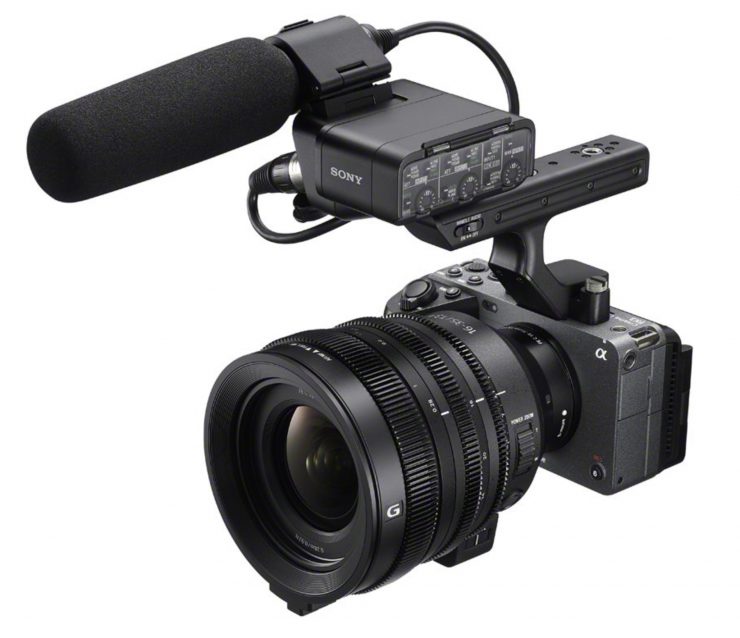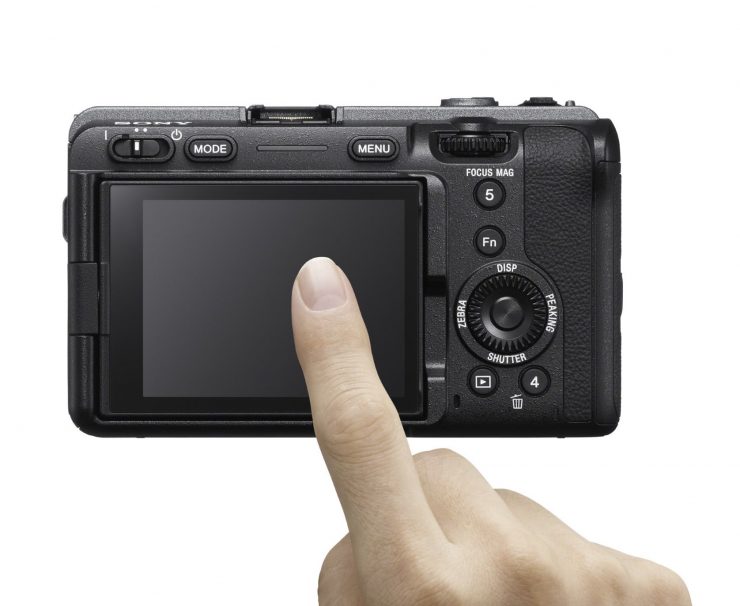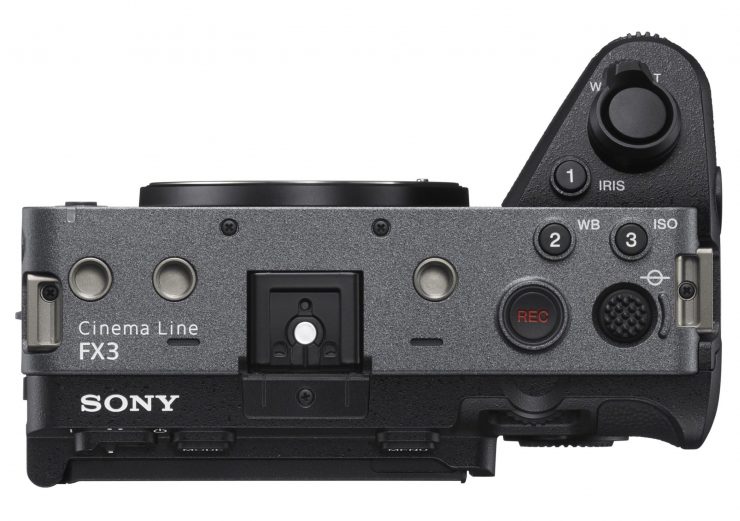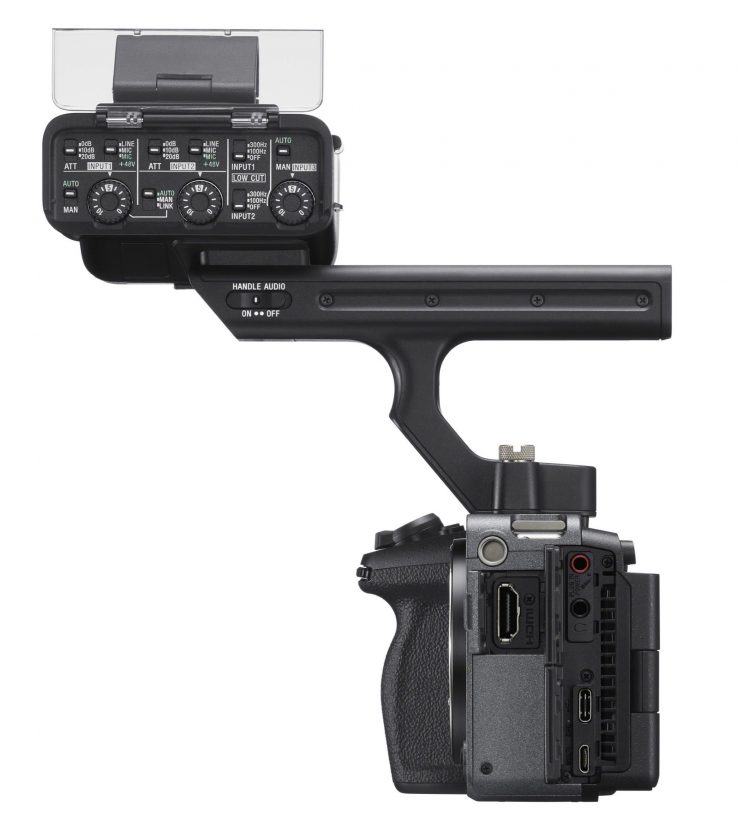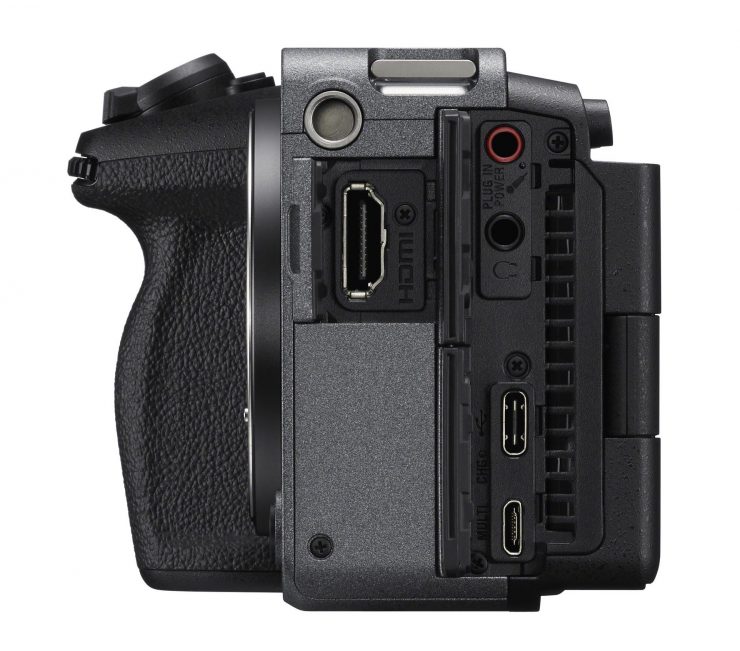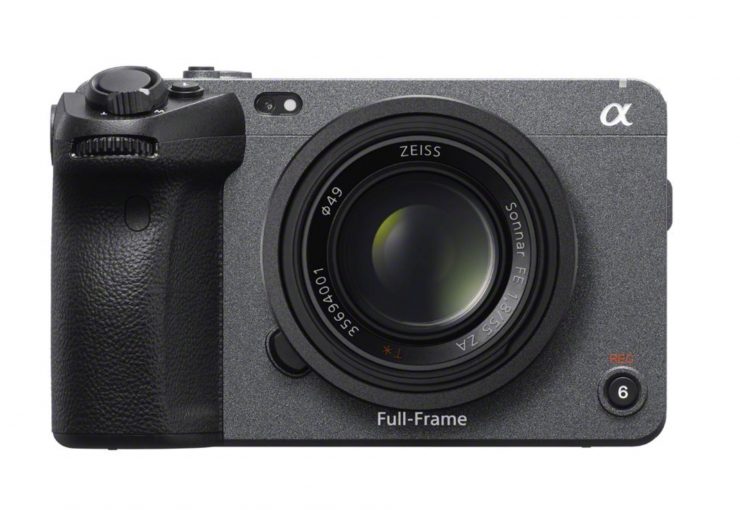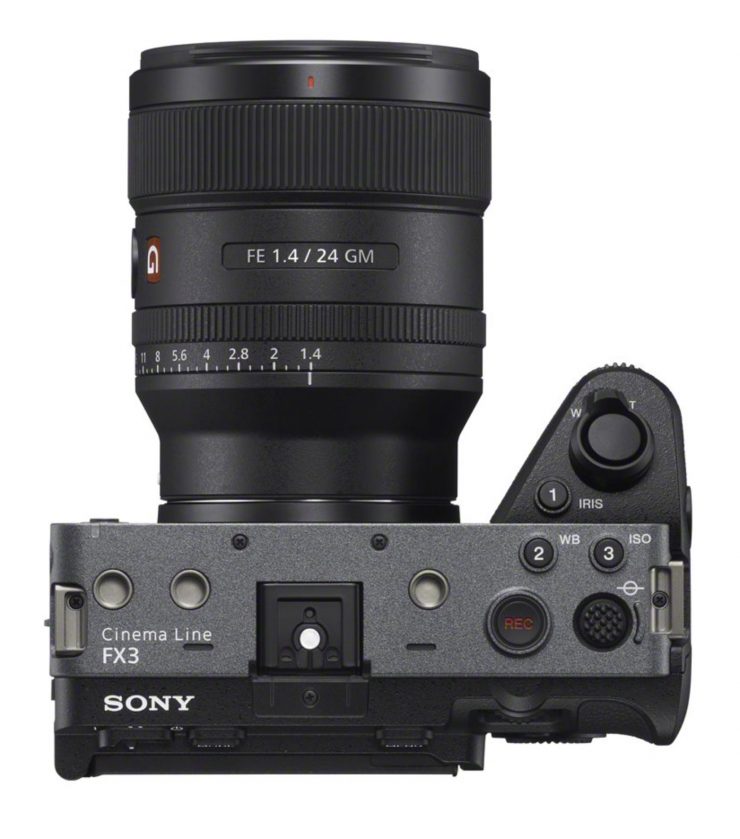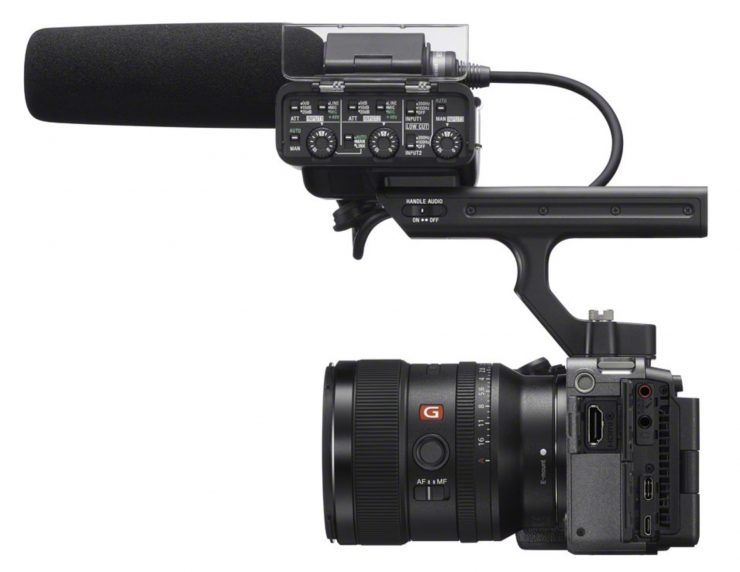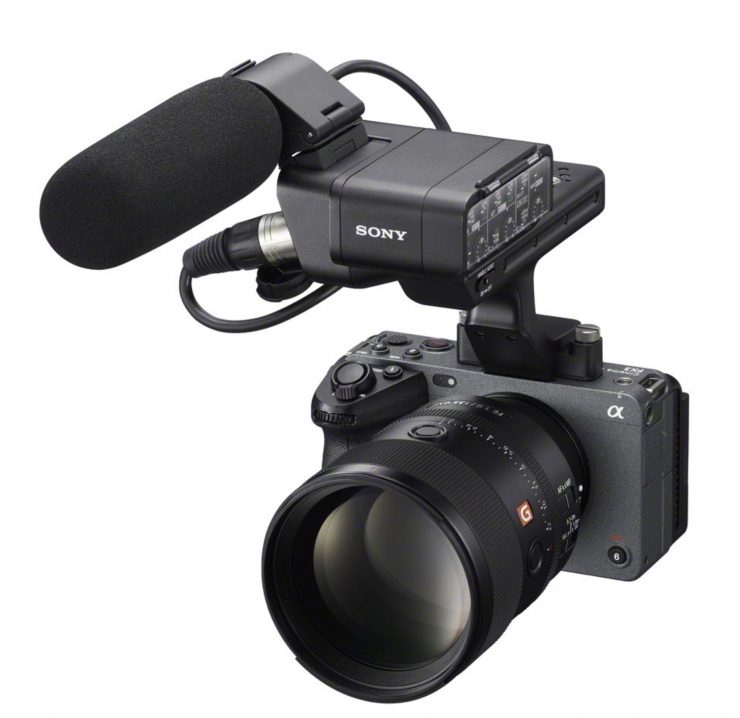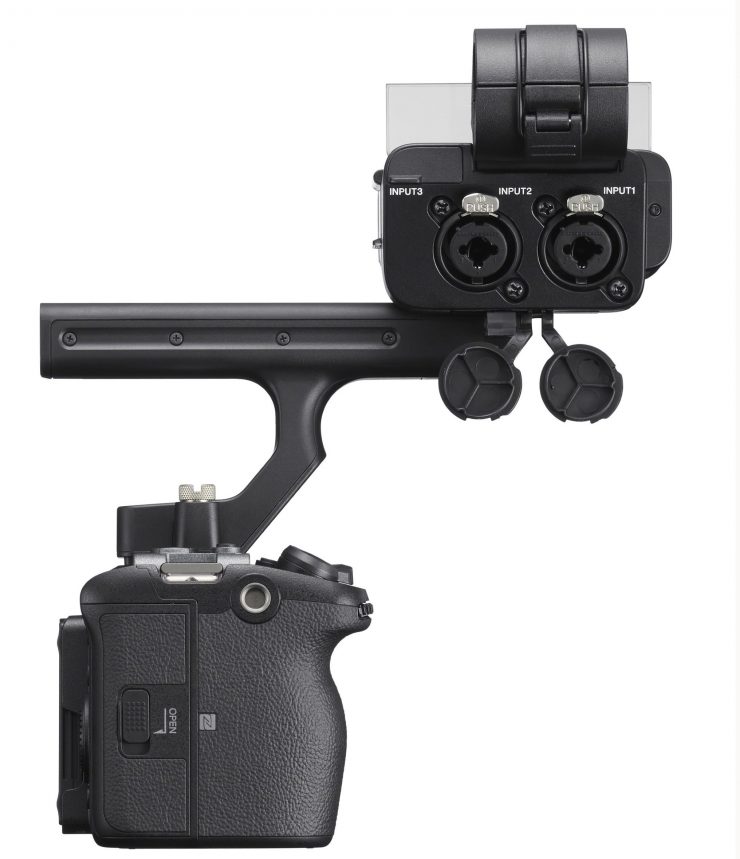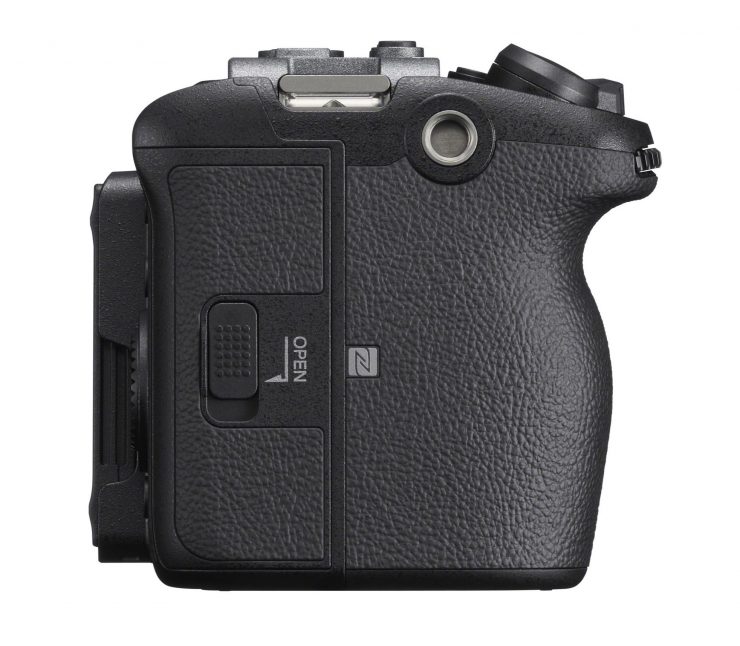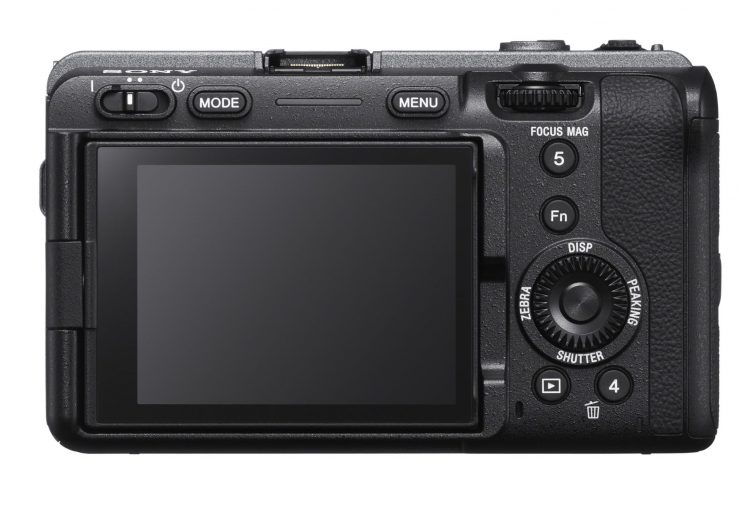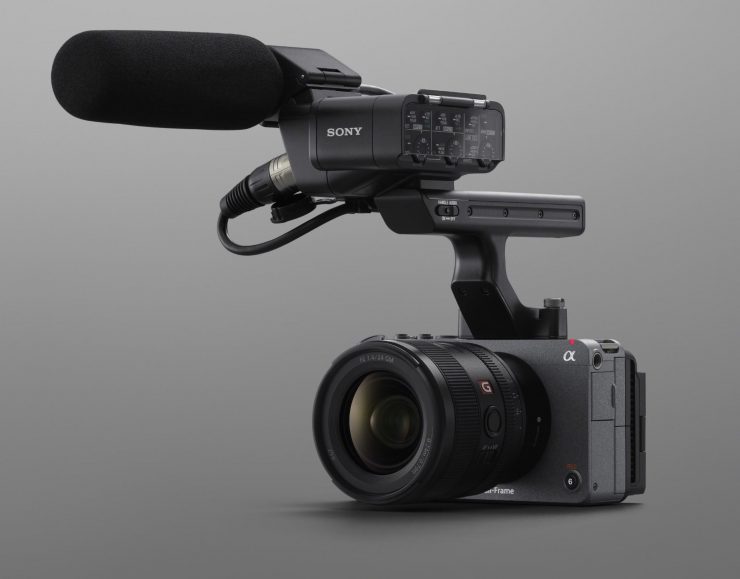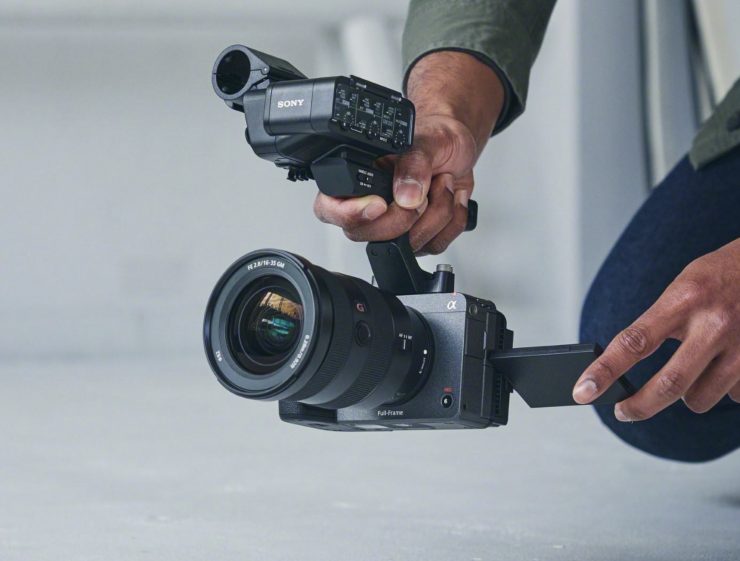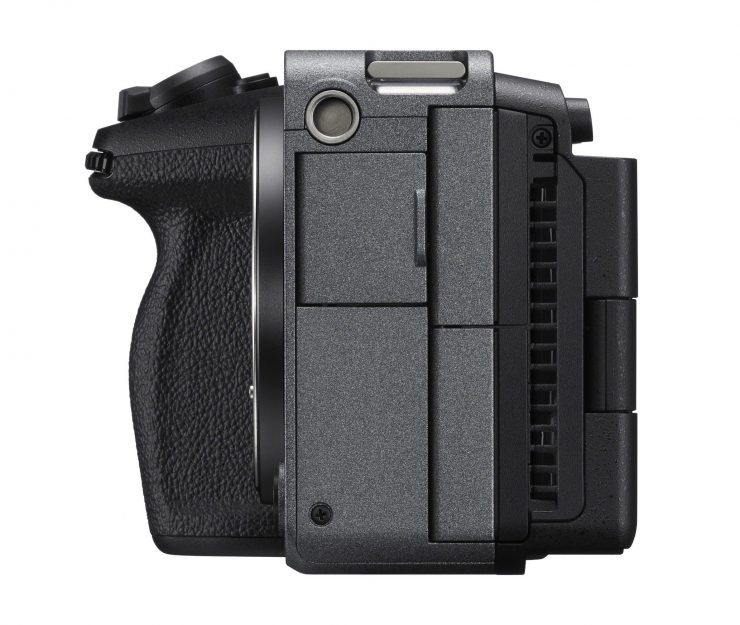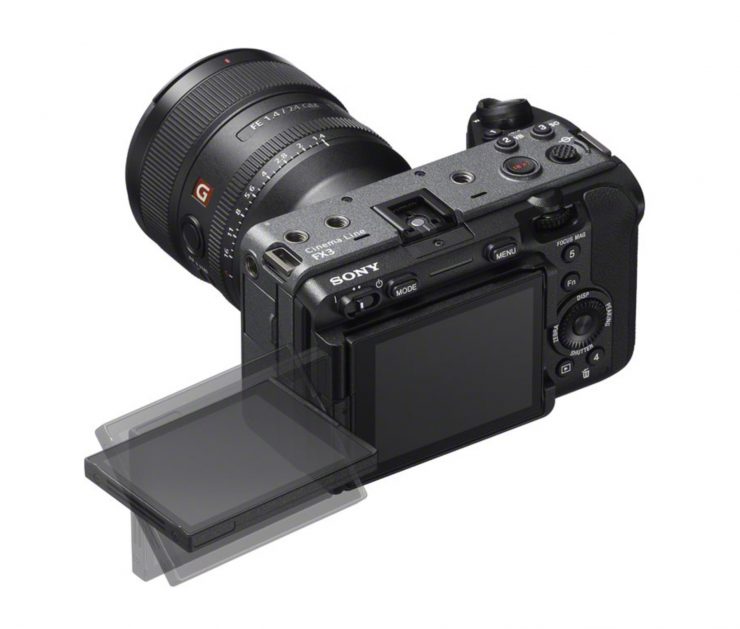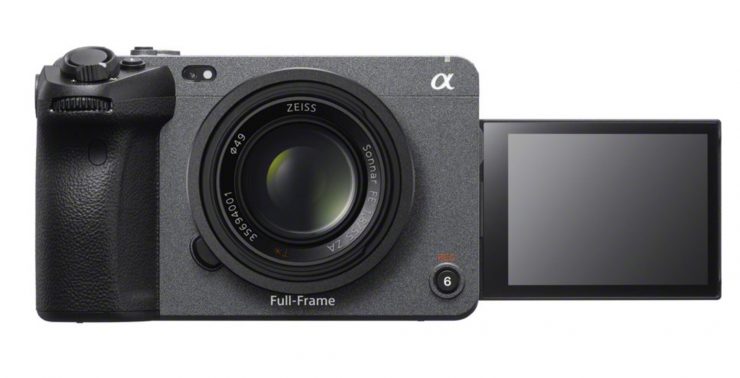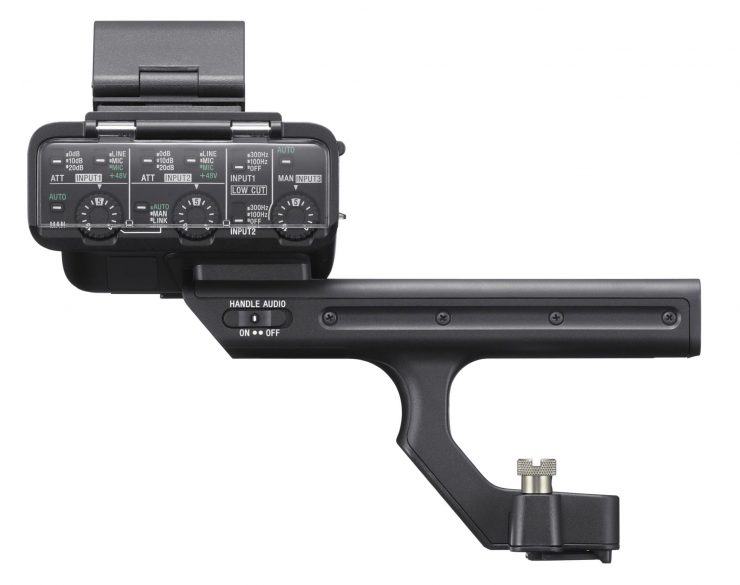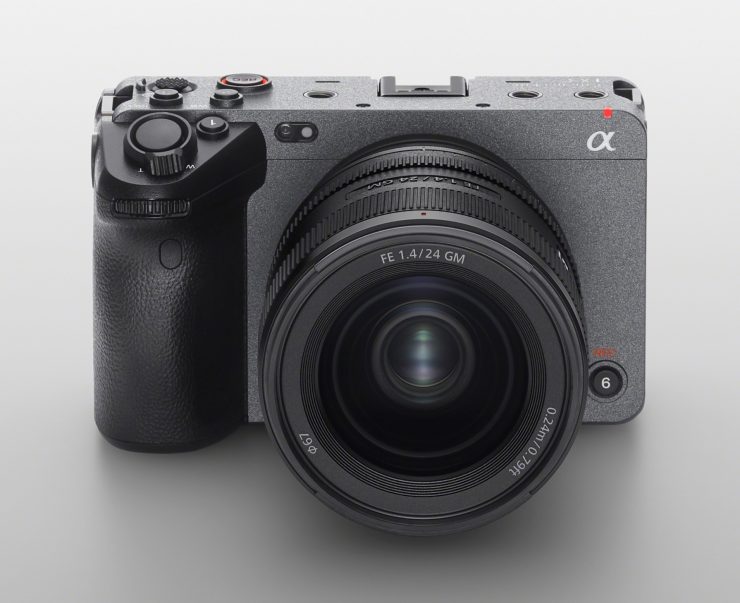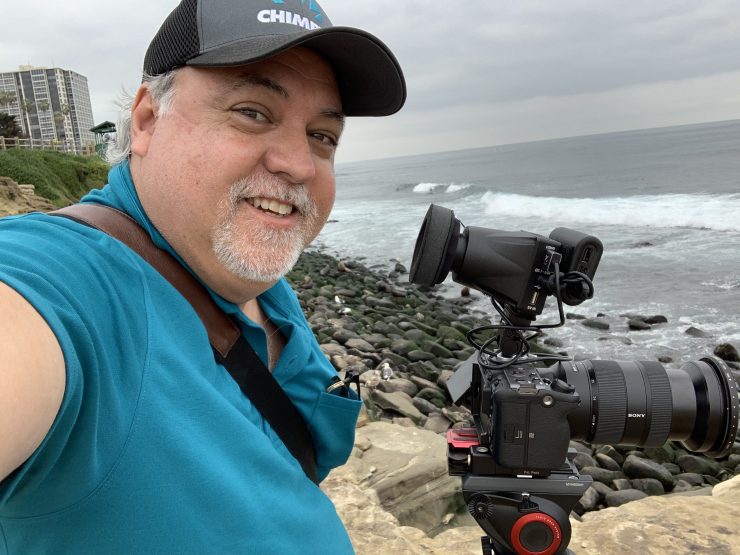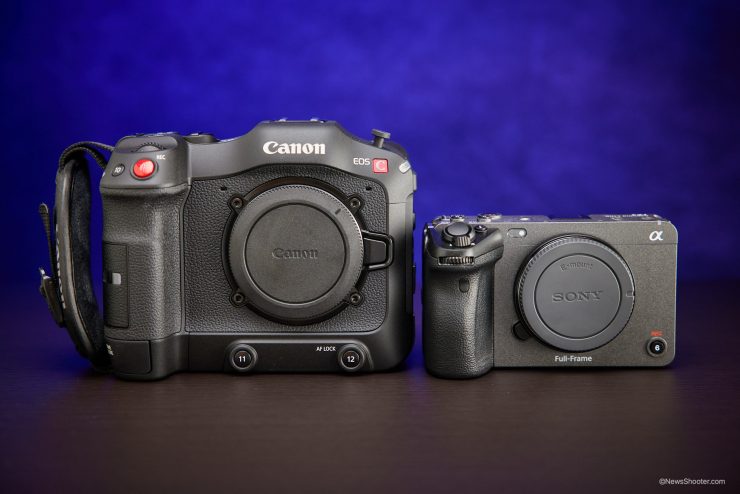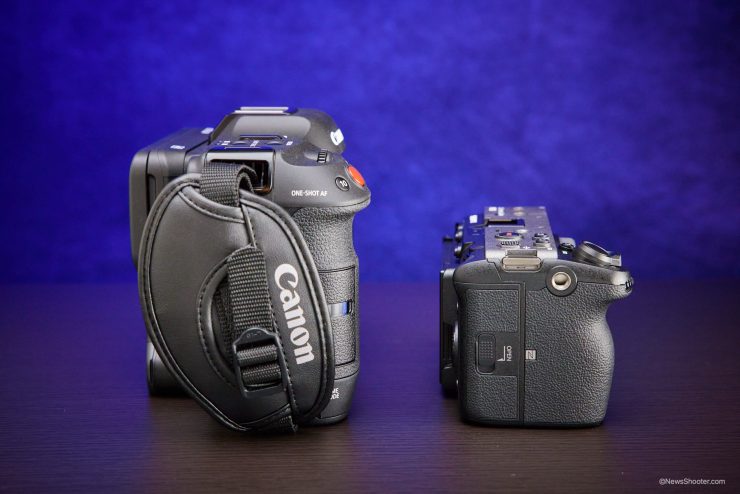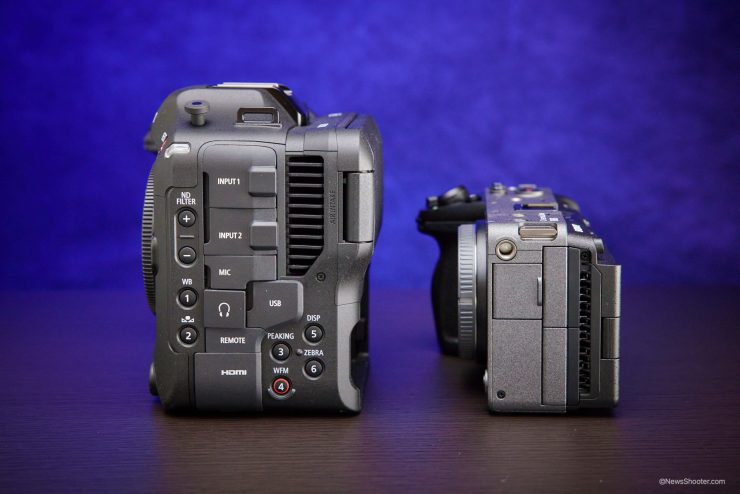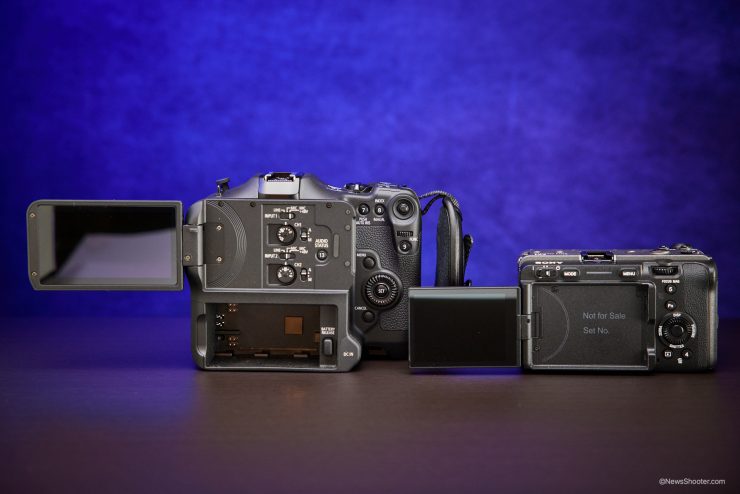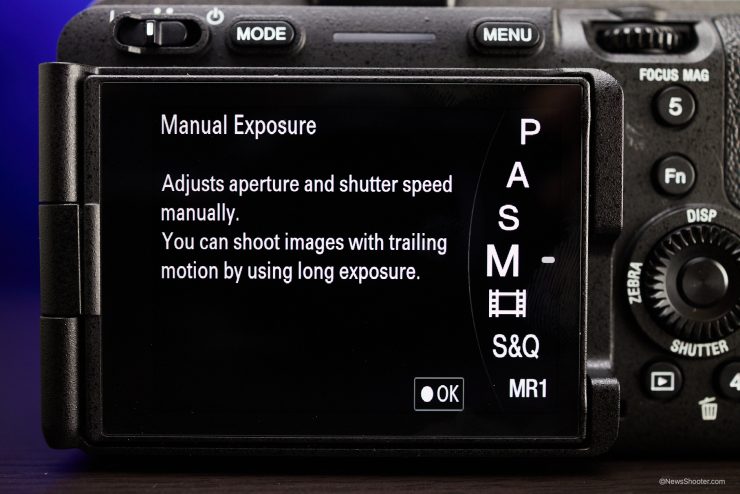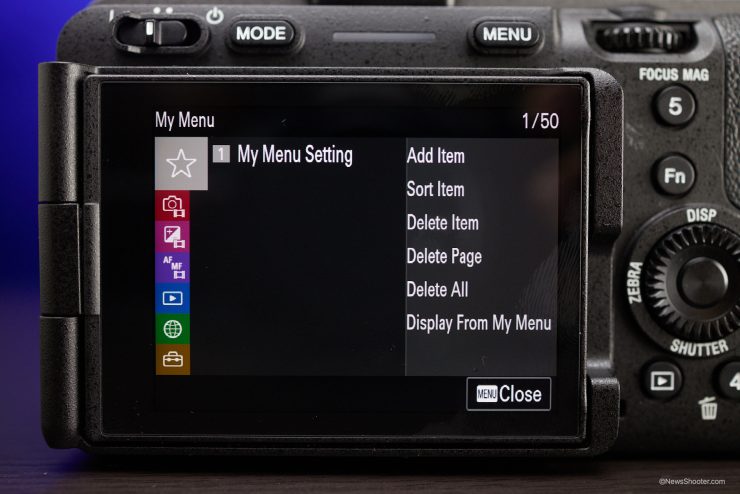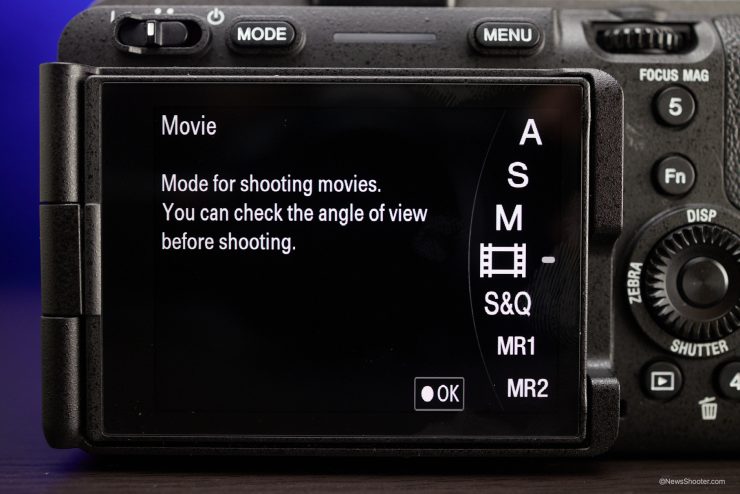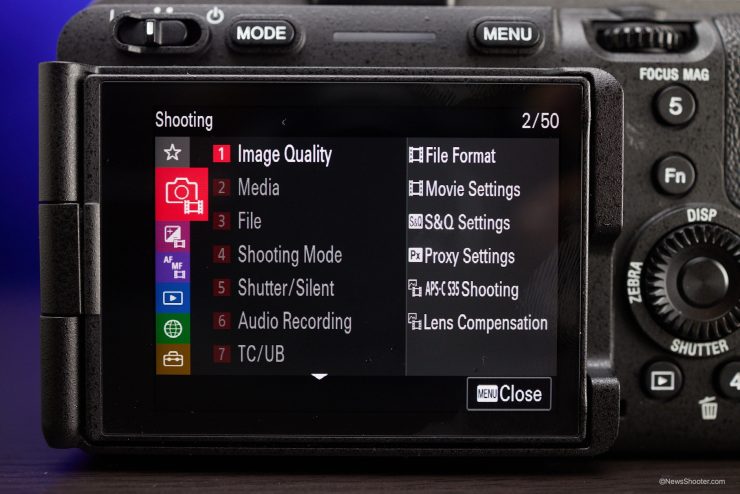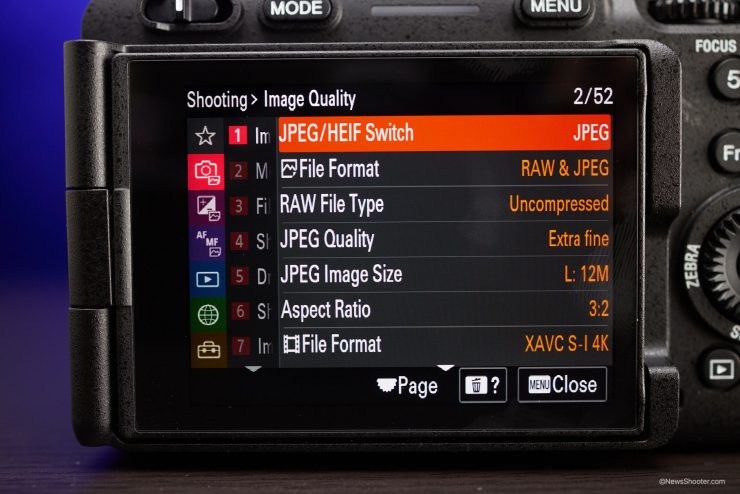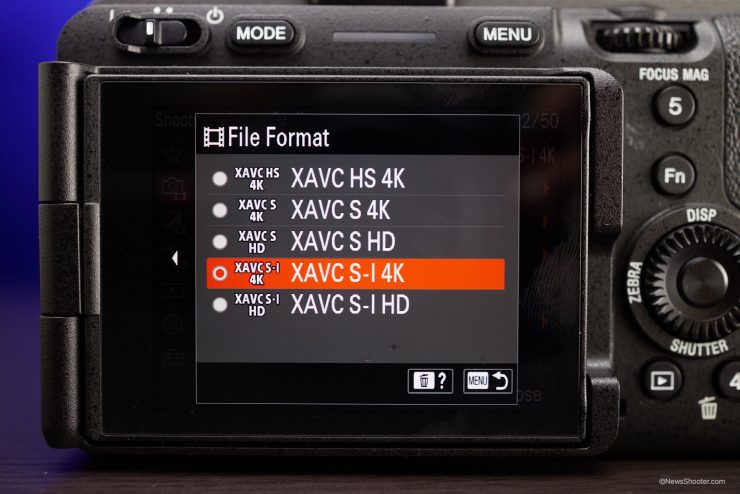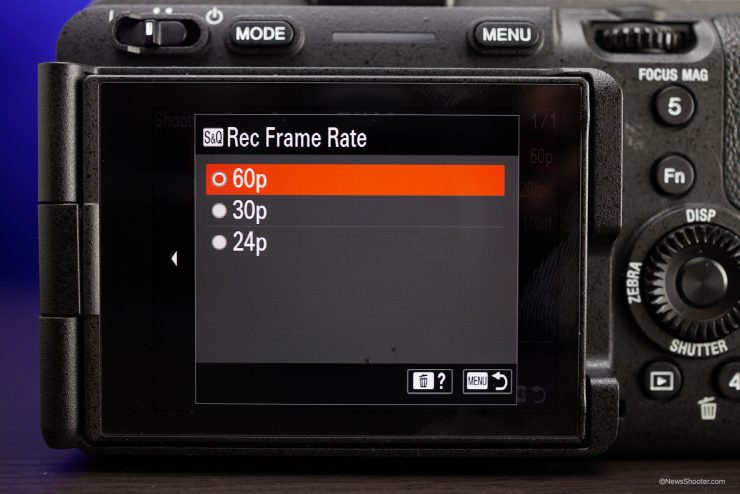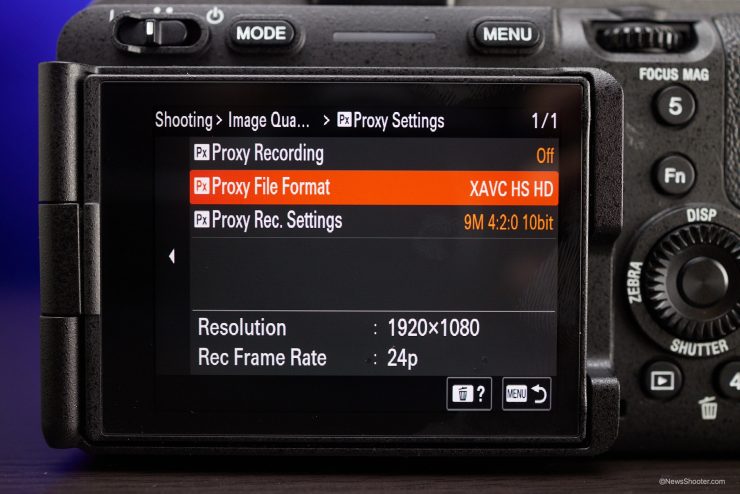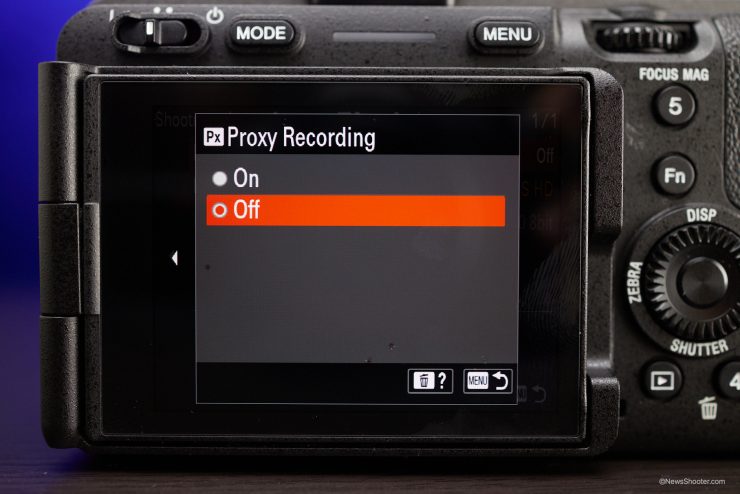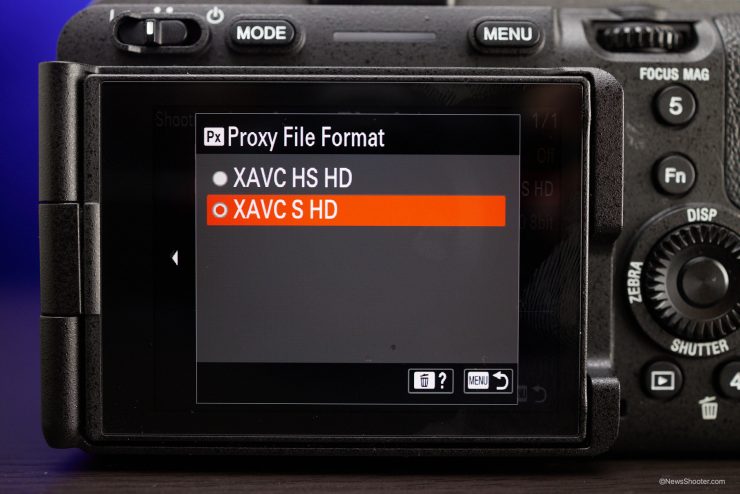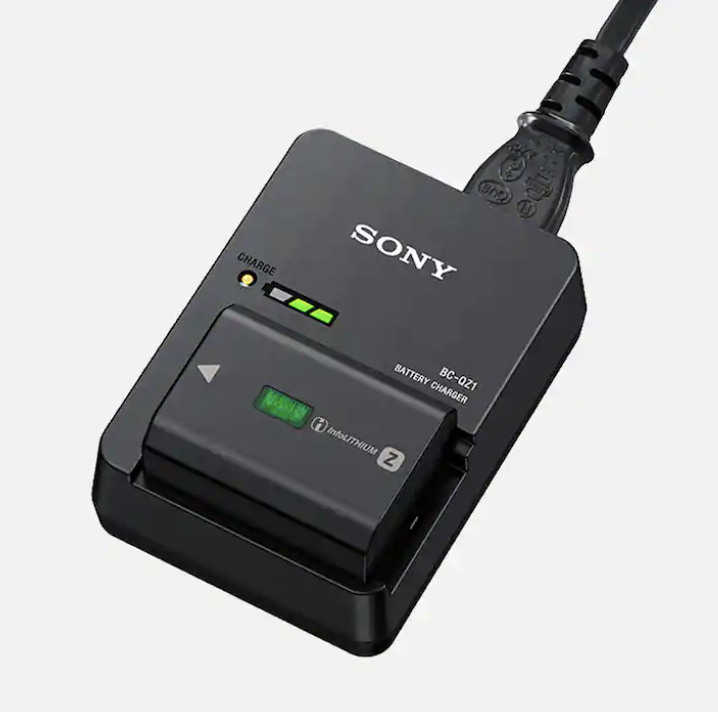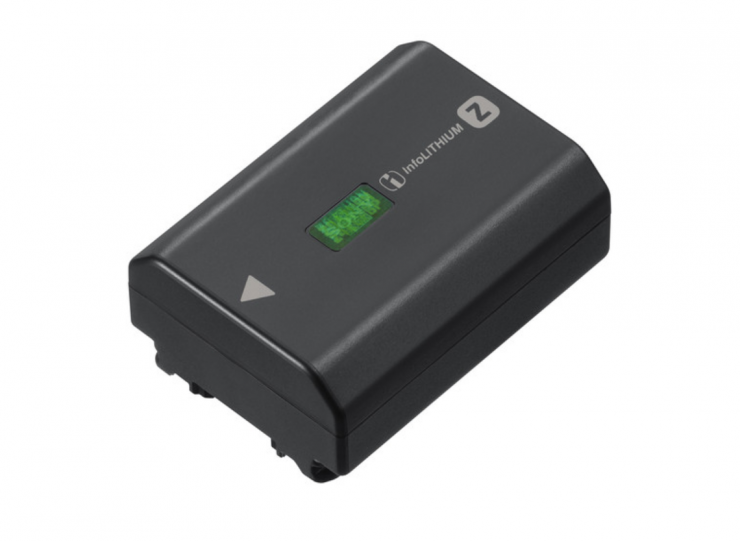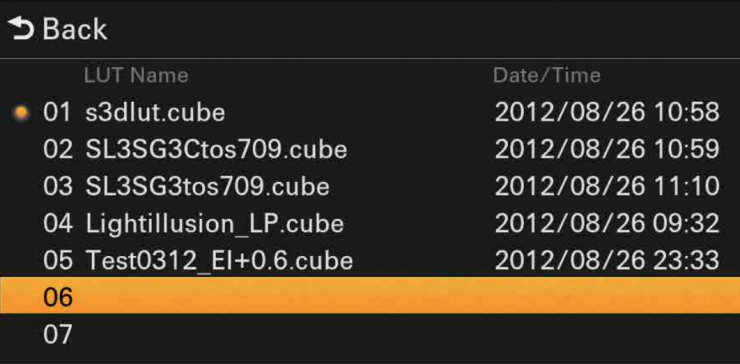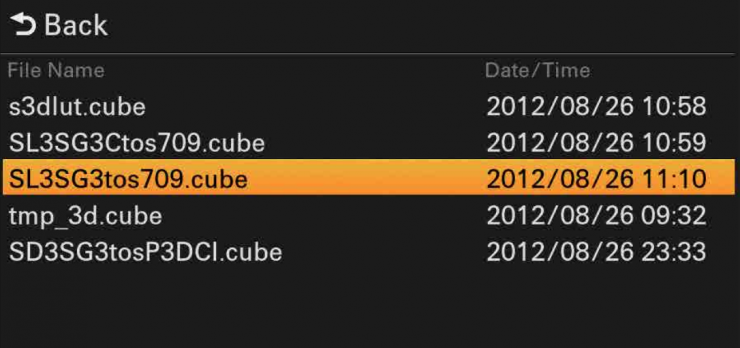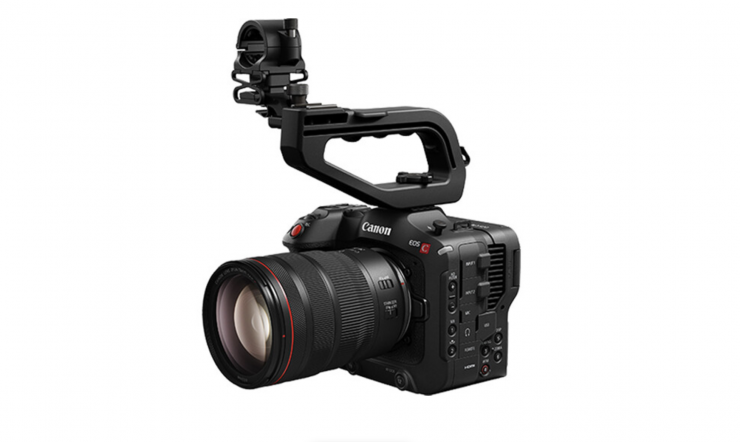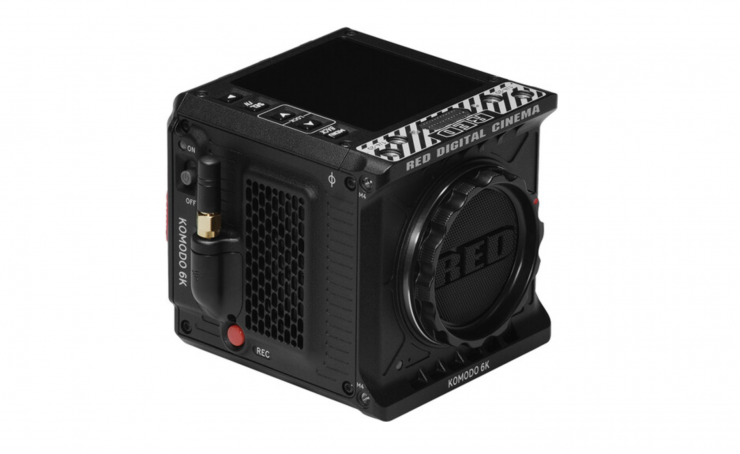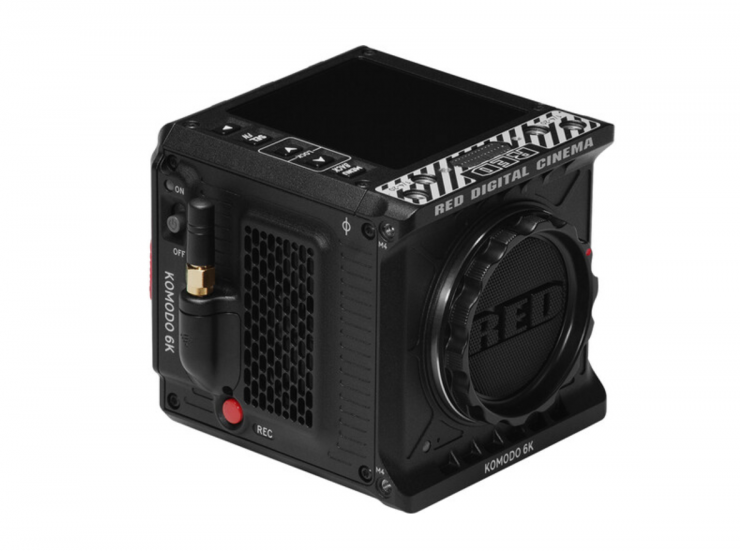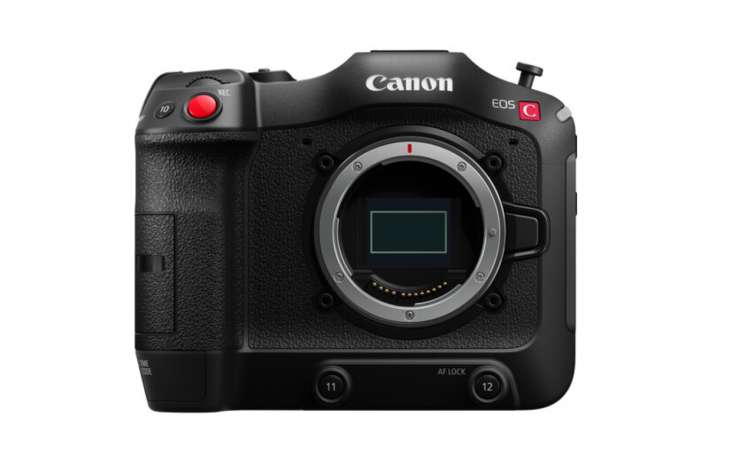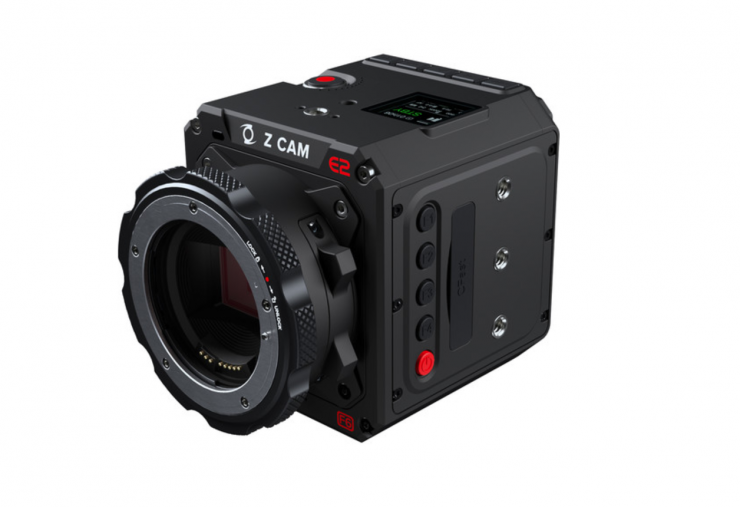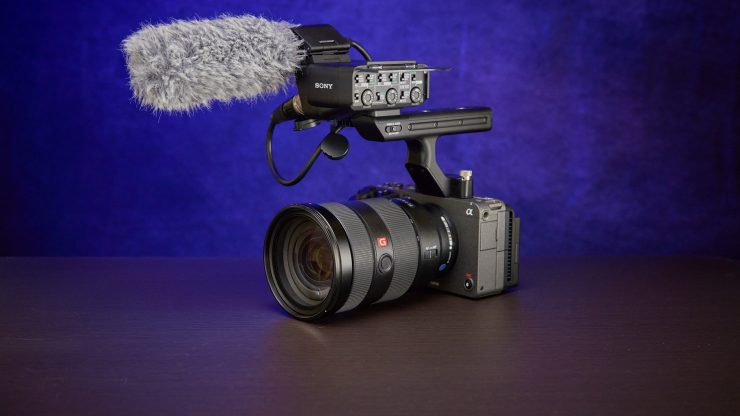
Sony has announced the FX3, the fourth camera in its new Cinema Line. It now joins the FX6, FX9, and the VENICE in Sony’s professional digital cinema line-up.
Essentially the FX3 is an a7S III in a slightly more video-centric configuration.
Please make sure you check out Erik’s hands-on with the new FX3.
You can also watch the live stream announcement above.
Key features
- 4K 10.2MP full-frame sensor
- UHD up to 120p
- Claimed 15+ stops of DR
- AF with face detection and Eye-AF
- UHD 4:2:2 10-bit internal recording
- S-Cinetone
- External RAW recording with Atomos Ninja 5
- HD up to 240 fps
- Four channels of audio recording
- Full-Size HDMI
- 5-axis in-body stabilization
Concept
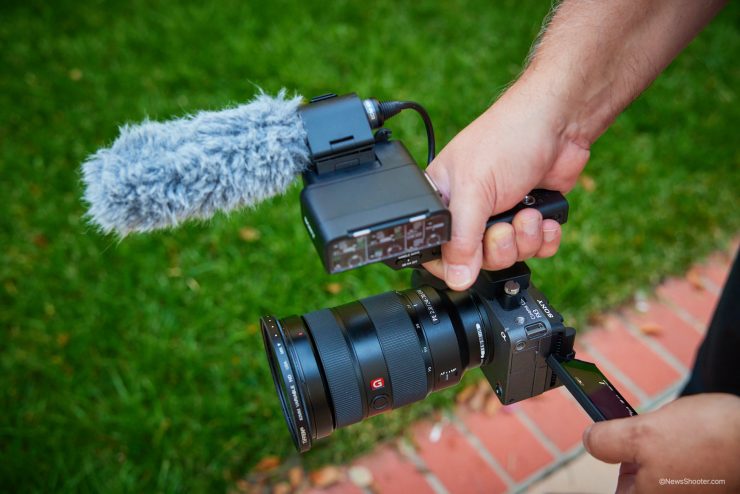
Sony is pushing the FX3 as being a lightweight, compact mobile production camera that can be used by solo operators. Hold on, isn’t that exactly what they said about the FX6?
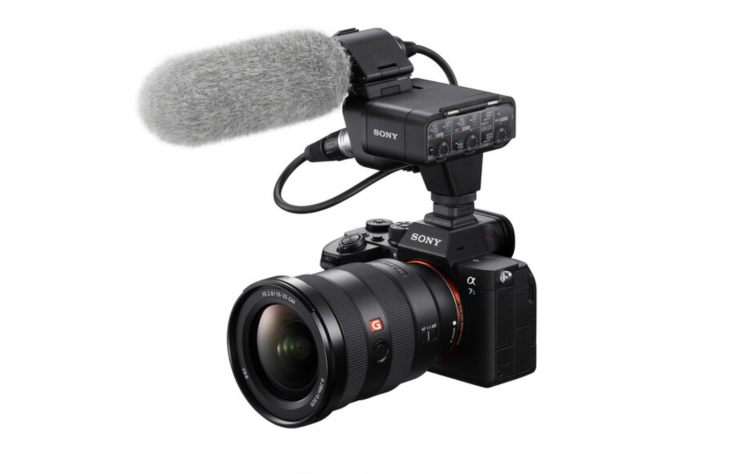
a7S III 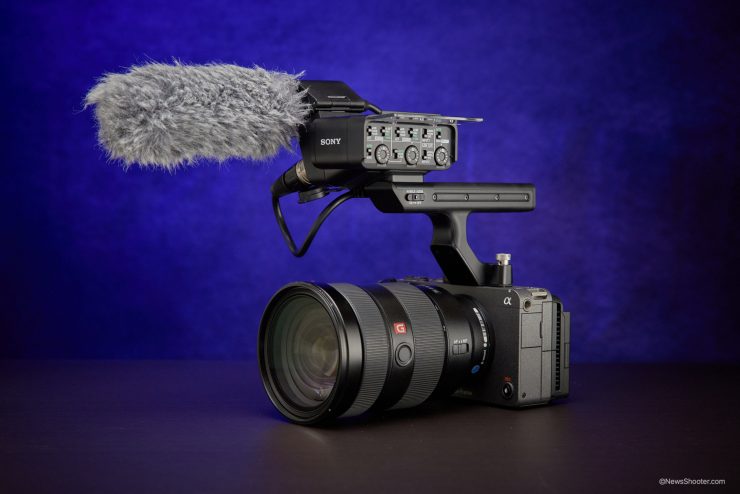
FX3
Even though it falls under the ‘Cinema Line‘ the FX3 has a lot more in common with the a7S III than it does the FX6. As you can clearly see above, the FX3 clearly leans more heavily towards alpha than Cinema. In my opinion, it is a little strange that this camera is part of the ‘Cinema Line‘ given it doesn’t have feats you would associate with a digital cinema camera.
The camera does get S-Cinetone which is something the a7S III doesn’t have.
Form factor

Sony FX3 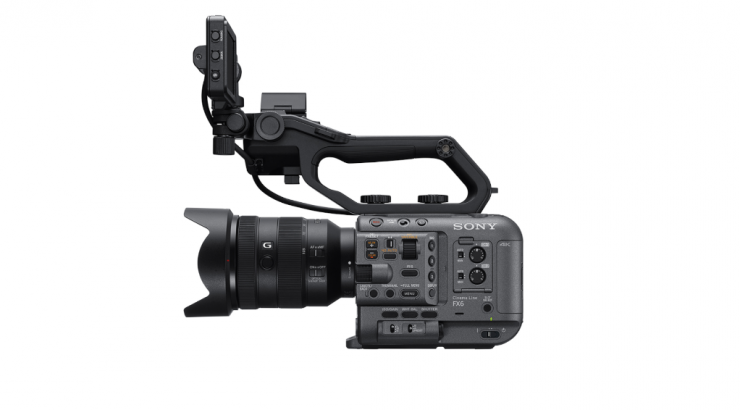
Sony FX6
Sony designed the FX3 to be as small and as compact as possible. It is considerably smaller than the FX6. While the FX6 and FX9 share a similar design philosophy, the FX3 shares the same form factor of the a7S III.
At first glance the FX# does look to be exactly the same as an a7S III, however, you will notice that there is no EVF on the back and the controls have been somewhat simplified.
I can somewhat understand the FX6 not having an EVF, but I personally think there was a place for one on the FX3. Given the form factor of the FX3, I think a lot of potential users would agree with me.
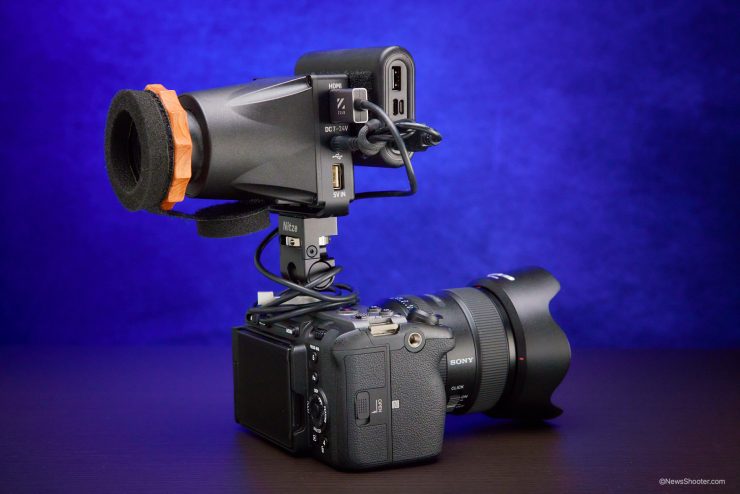
Yes, you could add a third-party EVF to the FX3, but given its small size, the EVF is going to be nearly as big as the camera and by the time you add a battery or powering solution it will end up weighing more than the camera.
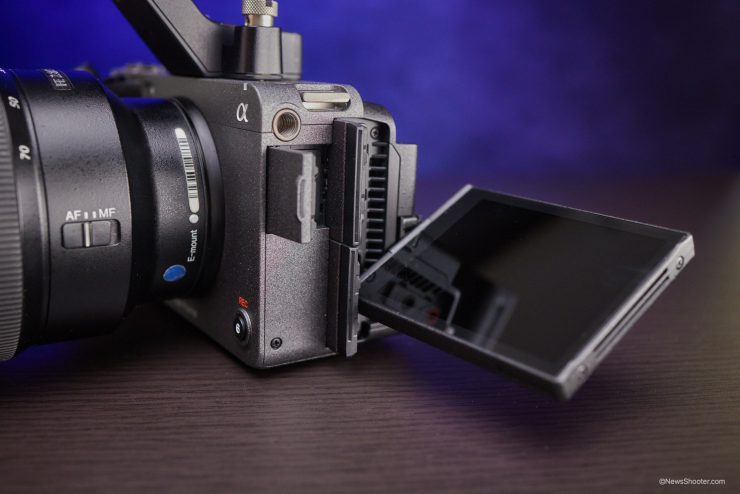
The only monitoring for the camera comes in the form of a 3″ 1,440,000 Dot articulating touchscreen LCD, which looks to be the same one that is used on the a7S III. This is slightly smaller than the 3.5″ screen found on the FX6.
To keep the cost down Sony has undoubtedly used existing components and this is probably why the FX3 shares the same LCD screen as the a7S III.
The LCD screen has the following brightness modes:
- Manual (5 steps between -2 and +2)
- Sunny Weather mode
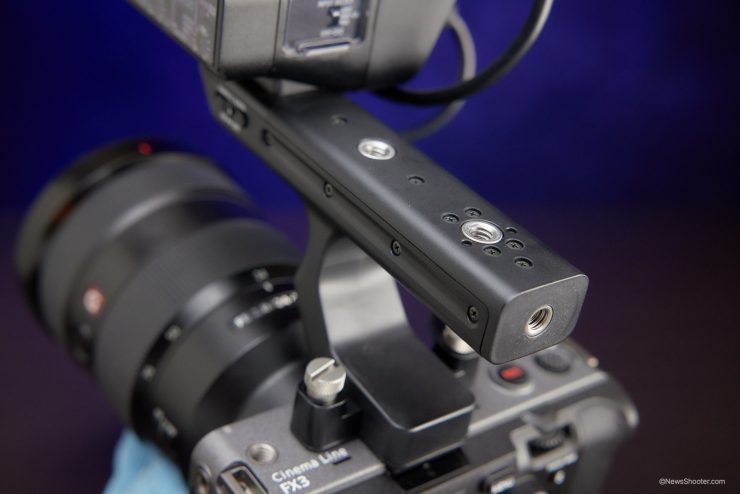
The included top handle connects to the top of the camera through a couple of 1/4 20″ screws and it also interfaces with the MI hot shoe. The top handle also features three 1/4 20″ threads for attaching accessories.
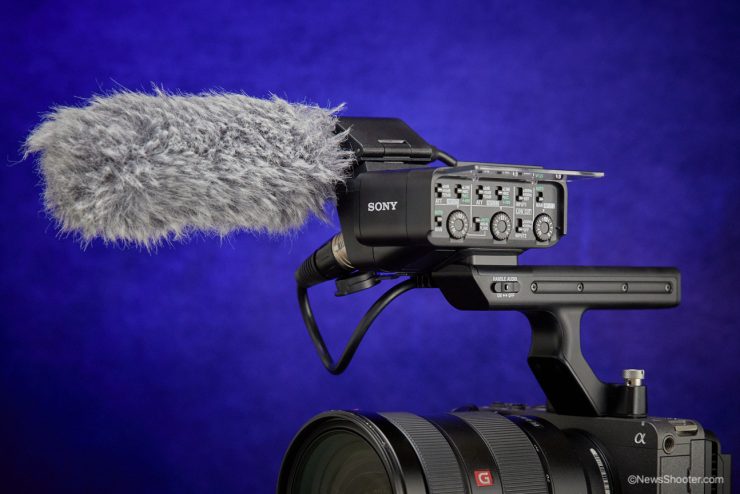
Included with the camera is an XLR audio module that looks to be very similar to the Sony XLR-K3M. More on audio later.
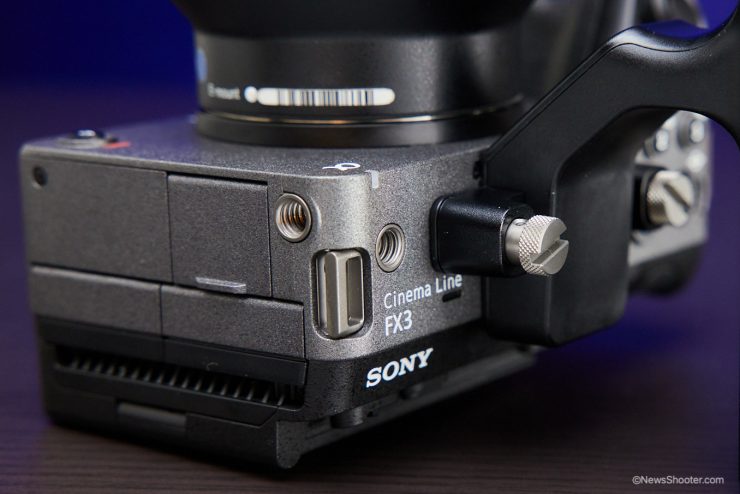
What is interesting is that the camera features its own exoskeleton that lets you mount accessories without having to use a third-party camera cage. At first glance, this appears to be a smart move by Sony, but if you look carefully half of the mounting points can’t be used because they end up obscuring areas where you need to hold the camera or plug an HDMI cable in. If you are using the top handle then you automatically lose two of the thread holes anyway. Look, I’m not knocking Sony here and it is nice to see an integrated exoskeleton, but I just don’t personally think it was well thought out.
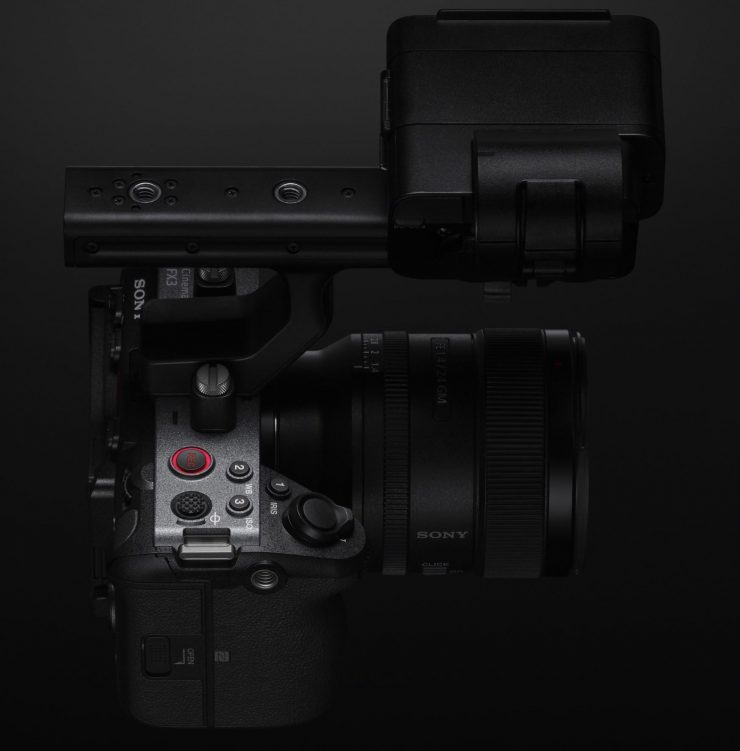
Sure, the top handle has three 1/4 20″ holes, but if you attach items to those good luck holding onto the handle.
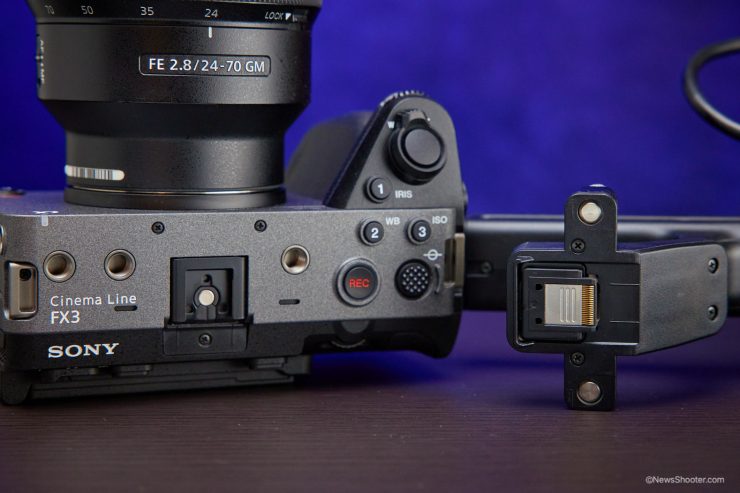
The camera has been designed to be modular and you can build it up or break it down depending on your needs. This is certainly a trend these days with cameras and one that is unlikely to change anytime soon.
FX3 From Every Angle
Size & Weight
The FX3 is tiny and it weighs in at 640g / 22.57 oz (body only) which makes it just 26g heavier than the a7S III which tips the scales at 614 g / 21.65oz (Body Only). It is 129.7 mm (5.11″) wide, 77.8 mm (3.06″) high, and 84.5 mm (3.33″) deep.
If you compare it side-by-side to the Canon C70, you can see just how small it is.
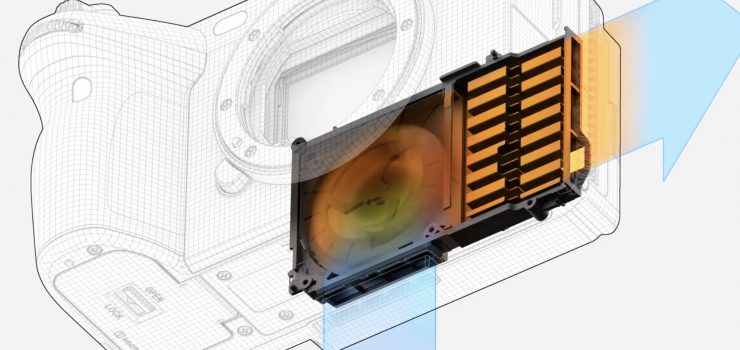
The FX3 has a built-in cooling fan that Sony has somehow managed to squeeze into the tiny body of the camera. The air intake is on the bottom of the camera and the exhaust is on the left-hand side beneath the HDMI port.
While Sony doesn’t state that the camera will not overheat, they do say that you can record UHD 60p 4:2:2 10-bit in 25°c (77°F) ambient temperatures continuously without any overheating issues. Now, depending on what mode you are shooting in and the ambient temperature you could still potentially run into overheating problems when recording for long periods of time.
It is impressive that Sony has been able to make the FX3 so light and small, especially since they have included a cooling fan.
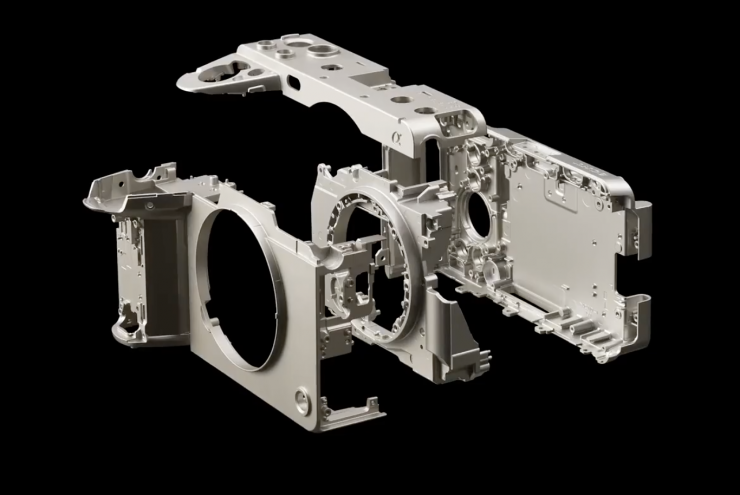
The internal structure of the FX3 is made out of magnesium alloy and the camera also features dust and moisture sealing. The external exoskeleton of the camera that features the built-in 1/4 20″ threads is made out of stainless steel.
Between a rock and a hard place
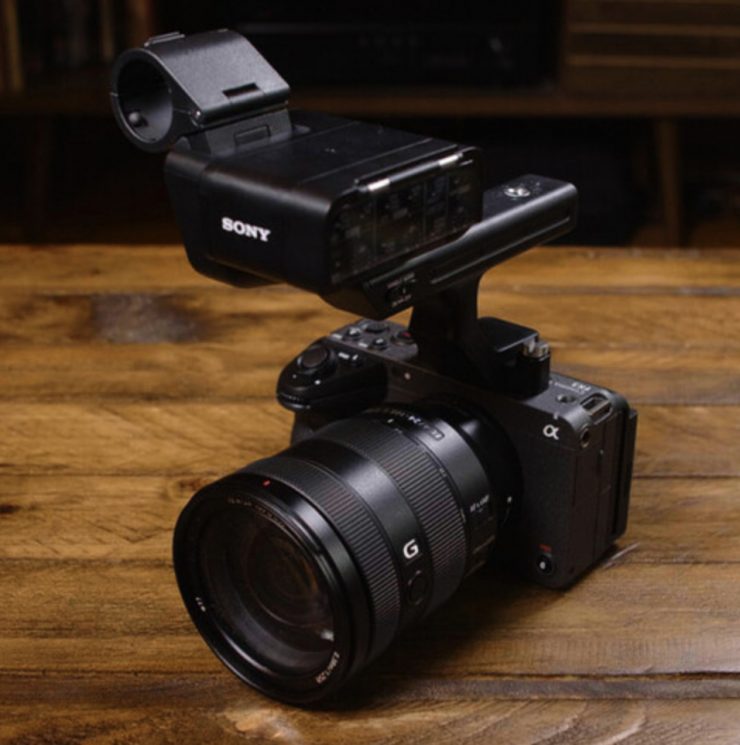
Sony already has the a7S III and the FX6, so creating a camera that doesn’t overlap with either of those two models is far from an easy task.
The line between the a7S III and the FX3 is very blurred. Both cameras have so much in common and they are only differentiated by a few small features. They both share the exact same sensor, recording capabilities, and form factor.
If you are going to try and squeeze a new model into an already crowded line-up it is much better to have that camera imitate an already available alpha series camera, than trying to make it a mini FX6. If Sony had have given the FX3 is a similar body to the FX6 then what would have been the point? It makes zero sense for an FX3 to have the same form factor as an FX6, utilize the same sensor and have the same electronic variable ND. What would you remove from the FX6 that would make the FX3 different?
Sensor
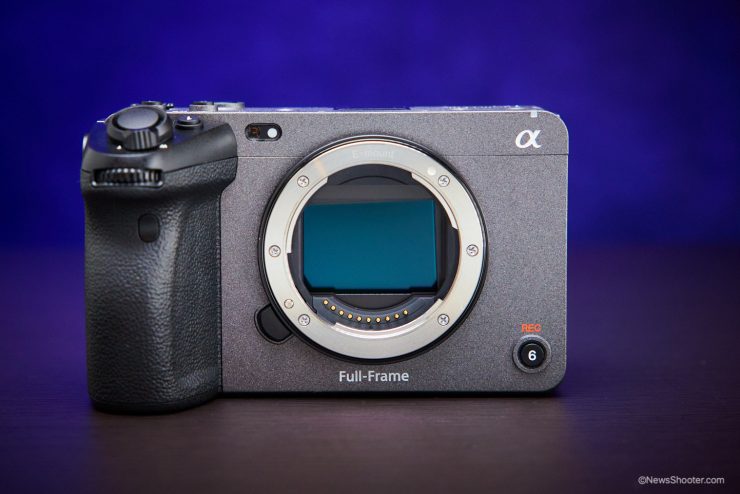
The PXW-FX3 uses a full-frame Approx. 12.9 megapixels (total), 10.2 megapixels (effective) back-illuminated CMOS Exmor R 4K sensor. Sony won’t publically comment on whether it is the exact same sensor that is in both the a7S III and FX6, but I think we all know the answer to that one. When I asked Sony directly if the FX3 was using the same sensor as the a7S III, the response I got was- ‘The sensors in both cameras utilize the same technology.’

Above you can see the difference between a standard sensor (on the left), and a back-illuminated sensor on the right. Back-illuminated technology places the metal wiring of the photodiode beneath the diode instead of above it. Back-illuminated sensors offer increased sensitivity and less noise.
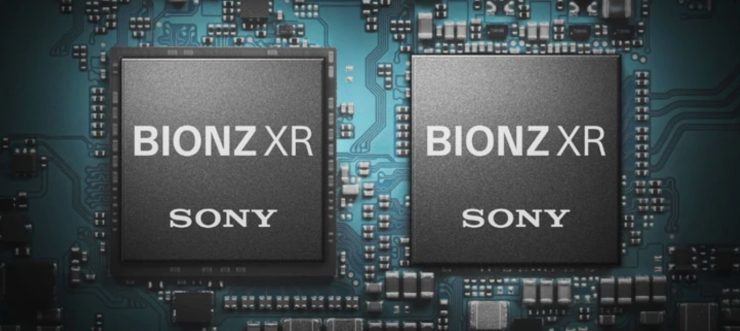
The FX3 utilizes the same BIONX XR image processor that is found in the a7S III and FX6. The processor is claimed to be able to read the sensor 3x faster than the a7S II and 2x faster than most traditional mirrorless hybrid sensors. This processor is claimed to be 4x faster than the one that was used in the FS5.
Because of the low megapixel count, the sensor readout is extremely fast, and this means that the rolling shutter will be almost non-existent. In theory, the rolling shutter performance should be on par with the a7S III and FX6
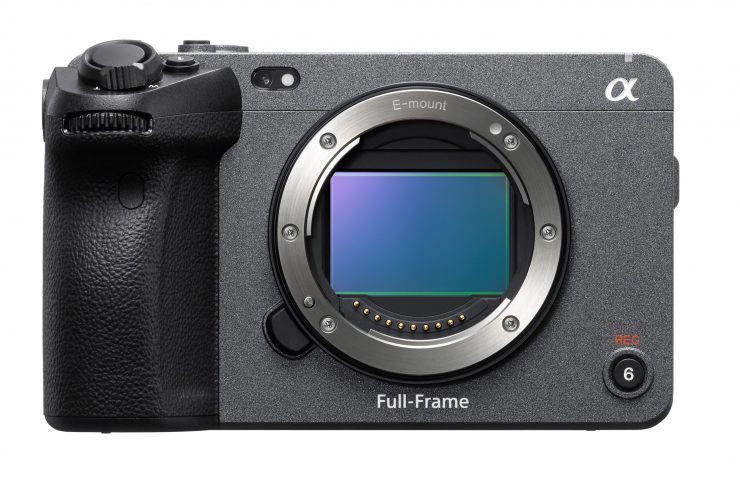
Now, the biggest downside when utilizing a smaller megapixel 4K sensor is that you can only shoot UHD in full-frame. If you switch to the 1.5x S35 shooting mode you are limited to recording in HD. You need to be seriously aware of this because if you are shooting documentaries or events you are going to have serious limitations with focal reach. This alone makes the much more expensive FX9 a more appealing proposition for certain shooting scenarios.
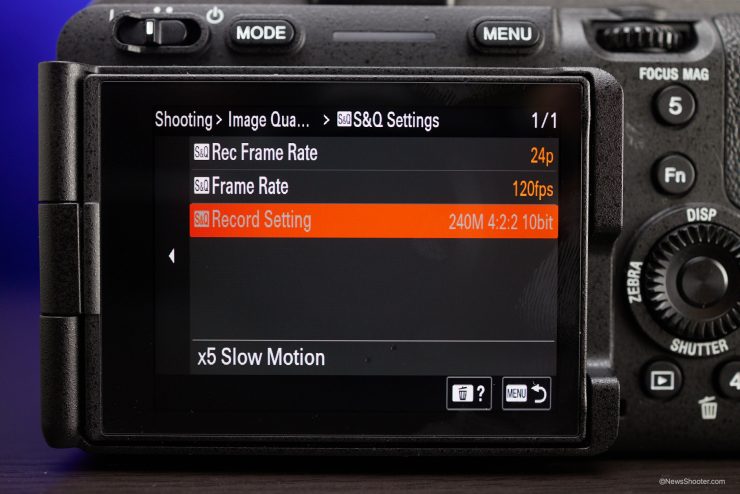
By utilizing this smaller megapixel sensor in the FX3, Sony can give you UHD at up to 120p with full pixel readout and no pixel binning.
The sensor in the FX3 will allow you to comfortably shoot in very low light environments without generating a lot of image noise. Given the target audience for the FX3, this is something a lot of users are going to appreciate.
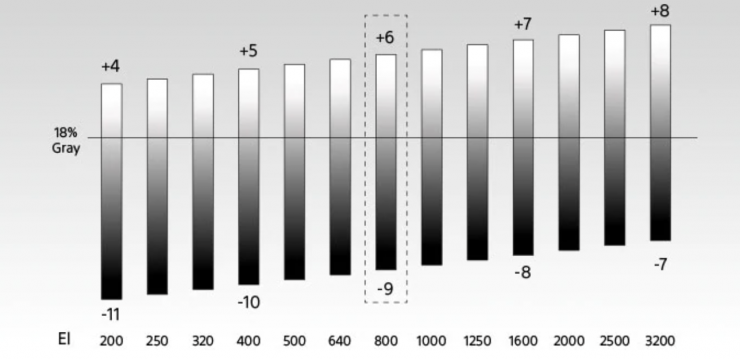
Sony is claiming 15+ stops of dynamic range from the FX3, but I would take that figure with a grain of salt. Most manufacturers exaggerate their camera’s real dynamic range.
Sony was also keen to stress that all of the cameras in the Cinema Line have similar color science and that they have all been designed to match. Given the FX3 has S-Cinetone, if you were also using the FX6 or FX9 with S-Cinetone also selected, the cameras should match up pretty well.
The camera’s ISO range is exactly the same as that of the a7S III, which is 80-102,400. The ISO is also expandable from 40-409,600.
No Electonic Variable ND
The FX3 doesn’t have the same electronic variable ND system that is found in the FX6 and FX9. In fact, it doesn’t have any built-in ND at all.
There is one reason and one reason alone why this camera doesn’t have electronic variable ND and that is due to its small size. It has nothing to do with 5-axis in-body image stabilization or anything else.
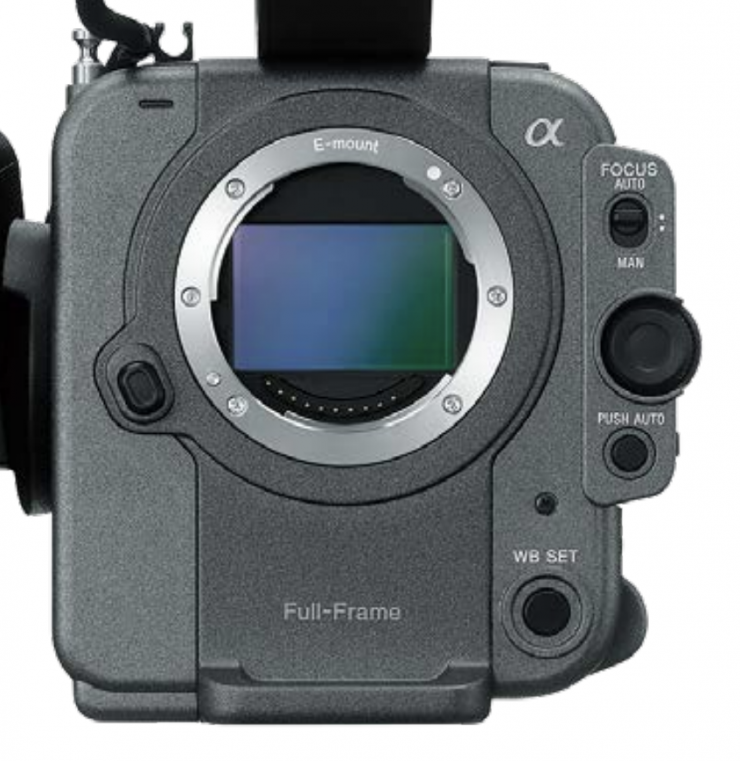
Sony’s variable electronic ND system mechanism is placed below the sensor on both the FX6 and FX9. On the FX3 there is no space to put this mechanism. This makes it physically impossible to place this system in a small-sized camera.
Could Sony have utilized a traditional rotating ND system instead? That is a good question. Again, I think because the camera is so small, there is no physical room for any type of internal ND.
One of the reasons that the Canon C70 and Sony FX6 are a lot bigger than the FX3, is mainly due to them both having an in-built ND system.
Base ISO
Even though Sony doesn’t officially list a base ISO for the FX3 or the a7S III, the base ISO for SLOG3 SGamut3.Cine is 640. Now, there is also a higher base ISO of ISO 12800 when shooting in SLOG3 SGamut3.Cine that is cleaner. Sony doesn’t call this a dual native ISO camera, instead, the second ISO value is just referred to as a higher ISO.
The FX6 has a CineEI mode where the recording sensitivity is fixed at either 800 ISO when in the Lo Base sensitivity or 12,800 ISO when the camera is set to the Hi Base sensitivity. These values cannot be changed. CineEI mode is something you will not find on the FX3.
But it’s only 4K
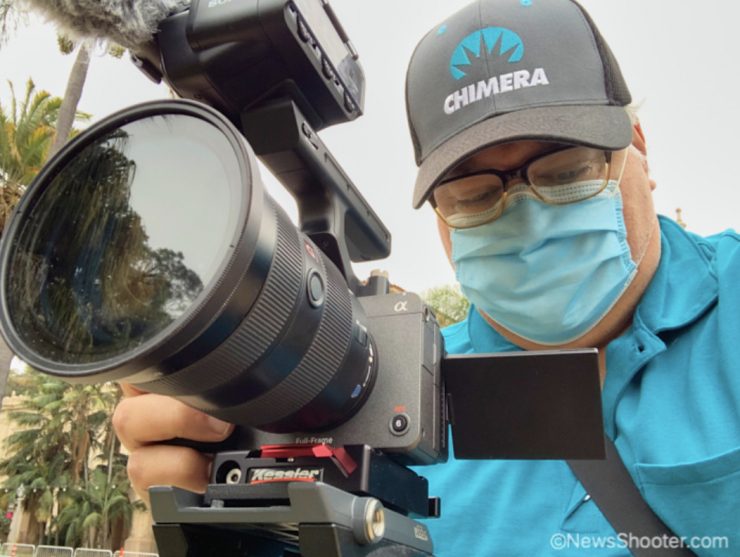
In some ways releasing a camera in 2020 that can only record 4K when a lot of your competition is doing 6K and 8K might at first seem like a strange decision. However, how many people actually need greater than 4K at this point in time? The majority of the content you consume is either HD or UHD, and that is unlikely to change anytime soon. Yes, you could very well argue that capturing at a higher resolution allows for more flexibility with reframing in post or downsampling to get a better 4K image, and those are good arguments, however, if you are capturing in 4K and still delivering in HD (which a lot of people are) you don’t necessarily need resolutions above 4K depending on what you are doing.
However, unlike the FX9 that is downsampling from a 6K sensor to record 4K, with the FX3/FX6/a7S III you are getting 4K from a 4K sized sensor.
The worst argument I always hear in regards to resolution is that I am future-proofing my material. Is historical content not being shown anymore because it was captured in black and white, or 4:3 or SD? Of course not. Future-proofing my footage is a ridiculous argument especially considering the majority of peoples’ work isn’t something that needs to be preserved and shown in 20 years’ time. In my opinion, there is no such thing as future proof. Again there is nothing wrong with wanting to capture something in the highest quality possible, but just don’t use the future proof argument.
Eye-popping specifications and marketing hype sell cameras, and while the FX3 doesn’t have specifications that leap off the paper, it is still bound to be a popular camera.
Remember, a camera is just a tool, and it’s not going to magically make you a better shooter. The camera you are currently using is probably still getting you work and making you money. I personally don’t get the fascination with people wanting to continually change their cameras when the camera they are already using is perfectly up to the tasks required.
Auto Focus
The FX3, just like the FX6 and a7S III, features a next-generation sensor chipset that provides much improved AF with face detection and Eye-AF.
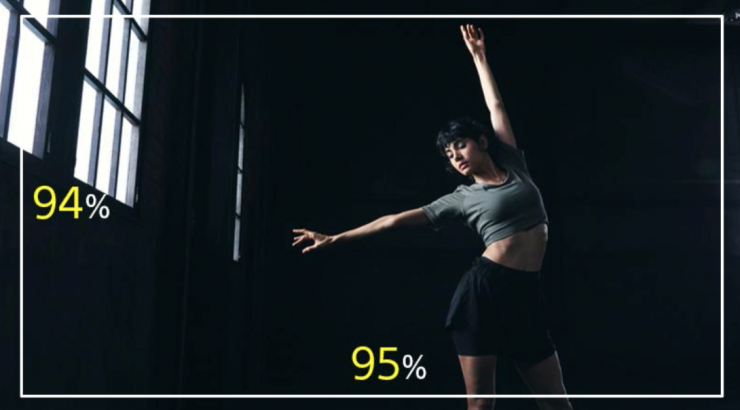
The enhanced Fast Hybrid AF system has customizable AF transition speeds and sensitivity settings, and also combines phase-detection AF for fast, accurate subject tracking with contrast AF for exceptional focus accuracy. The dedicated 759-point phase-detection AF sensor covers approximately 95% in width and 94% in height of the imaging area. Sony claims that this provides consistently accurate, responsive AF tracking, even with fast-moving subjects while maintaining a shallow depth of field.
Again, the AF is the exact same system that is being used in the a7S III.
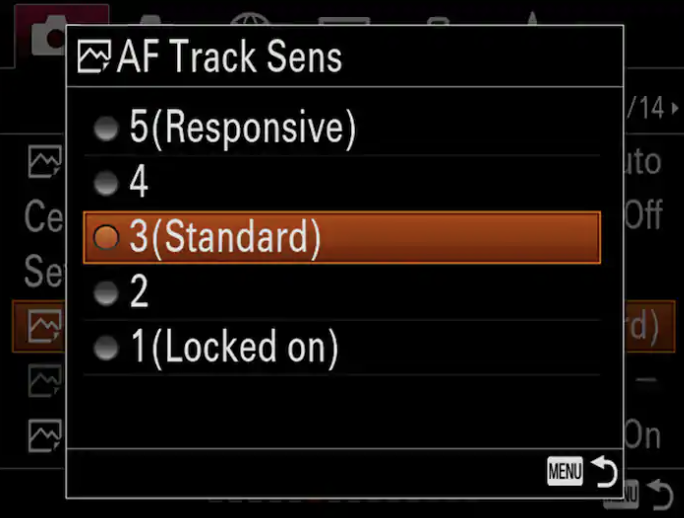
There are five-level AF transition speeds from fast-switching between subjects as quickly as possible to slow, where speed is reduced to fit a more measured shooting style.
Five-level AF subject shift sensitivity ranges from locked-on, ignoring other moving subjects in the frame, to responsive that switches focus from one subject to another.
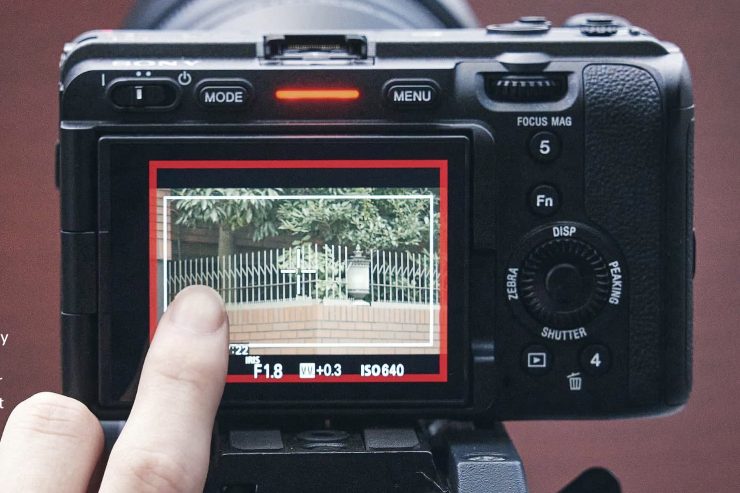
The AF works in all resolutions and all frame rates, including UHD at 120p and HD up to 240p. The AF system is also claimed to work really well in low light situations. Sony has really improved its AF technology in recent years and it is sure to be a big selling point for people who are looking at the FX3.
| AUTO FOCUS TYPE | Hybrid AF (phase-detection AF / contrast-detection AF) |
| FOCUS POINTS (35-mm full frame) | 759 points (phase-detection AF) |
| FOCUS POINTS (APS-C mode with FF lens) | 345 points (phase-detection AF) |
| FOCUS POINTS (APS-C lens) | 285 points (phase-detection AF) / 425 points (contrast-detection AF) |
| FOCUS SENSITIVITY RANGE | EV-6 to EV20 (ISO 100 equivalent with F2.0 lens attached) |
| FOCUS MODES | AF-A (Automatic AF), AF-S (Single-shot AF), AF-C (Continuous AF), DMF (Direct Manual Focus), Manual Focus |
| FOCUS AREA | Wide / Zone / Center / Flexible Spot / Expanded Flexible Spot / Tracking |
| EYE AF | [Still images] Human (Right/Left Eye Select) / Animal, [Movie] Human (Right/Left Eye Select) |
| OTHER FEATURES | Predictive control, Focus lock, AF Track Sens. (Still), AF Subj. Shift Sensitivity (Movie), AF Transition Speed (Movie), Switch V/H AF Area, AF Area Regist., Circ. of Focus Point |
| AF ILLUMINATOR | Approx. 0.98 ft – approx. 0.98 ft (with FE 28-70 mm F3.5–5.6 OSS lens attached) |
5 Axis In-Body Image Stabilization
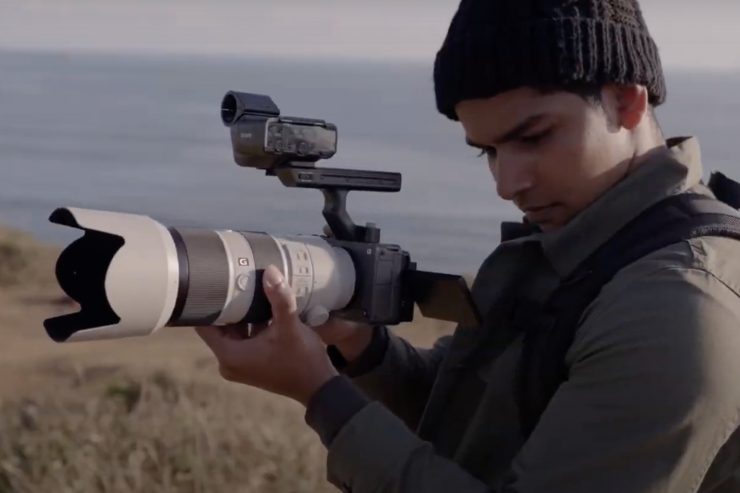
The FX3, just like the a7S III utilizes an enhanced 5.5-stop effective 5-axis SteadyShot image stabilization system, which compensates for five different types of camera shake. This is something the FX6 doesn’t have.
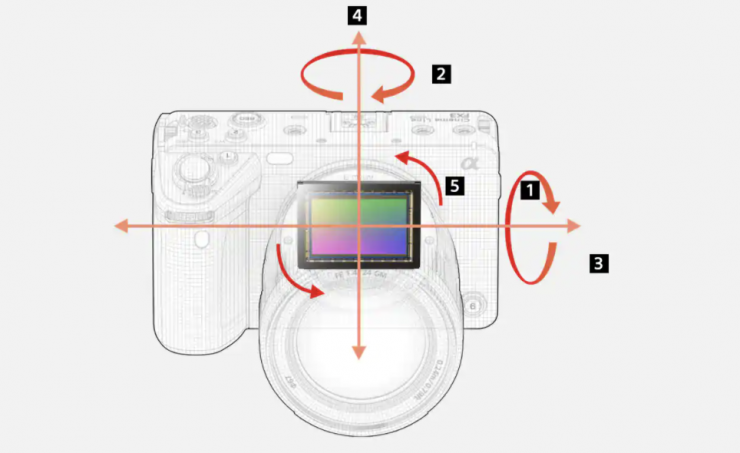
The FX3 is the first Sony digital cinema camera to feature 5 axis in-body stabilization. Given the small size of the FX3, it is nice to see that it does have this feature as you tend to see a lot of micro jitters when using small-sized cameras that don’t feature 5 axis in-body stabilization.
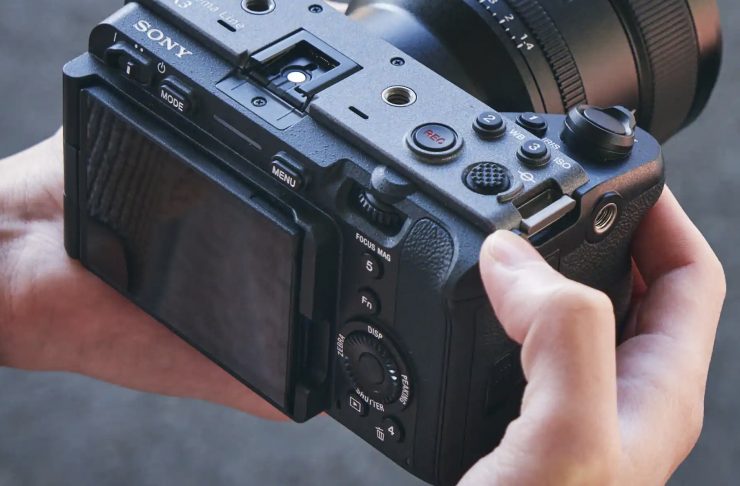
The camera also has the same Active Mode setting that is found in the a7S III. The Active Mode results in a slight image crop but it won’t work in any frame rates of 100 and above.
You can also choose to utilize the same gyro stabilization metadata that can be done on the FX6 and FX9. According to Sony, by recording image stabilization information and using it on the Catalyst Browse/Prepare option, content creators can capture incredibly stable visuals even in handheld mode. Sony is also working to encourage other third-party non-linear editing tools to adopt this functionality.
The advanced image stabilization information means handheld footage can be transformed with Sony Catalyst Browse/Catalyst Prepare software in post-production to look smoother. Unlike in-camera or lens stabilization, metadata generated by the FX3’s built-in gyro allows you to creatively choose the balance between the level of shake compensation, and the resolution. This feature is also compatible with any E-mount lens and allows for far faster processing than conventional NLE stabilization workflows.
No Locking E-Mount
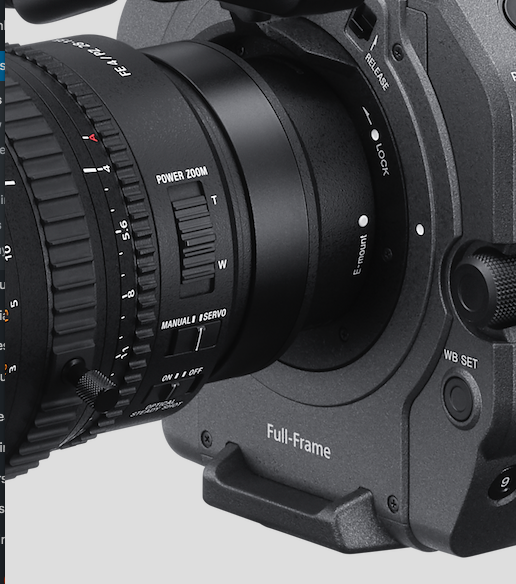
FX9 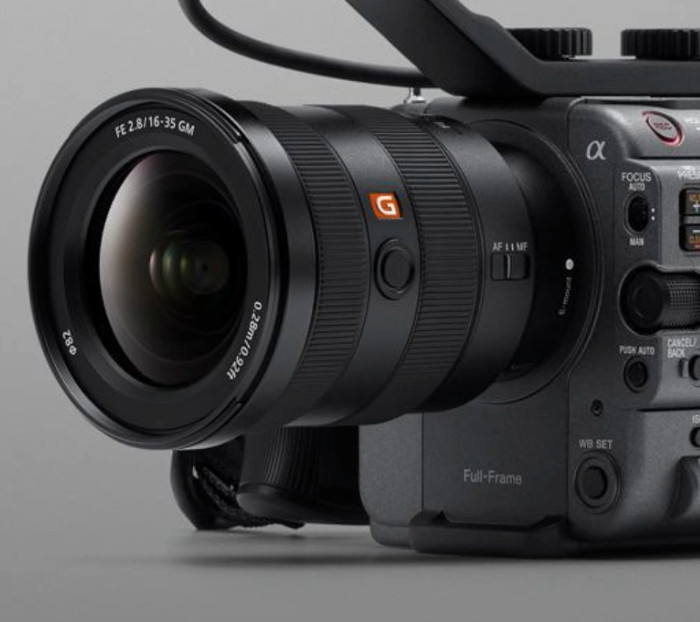
FX6
In no real surprise, that the FX3, just like the FX6, doesn’t have the same locking E-mount found on the FS7 M2 and FX9. It features a regular E-mount. This mount is fully compatible with E-Mount lenses and supports all electronic connections.
Not having a locking E-mount means you really do need to use lens support for certain larger lenses. With a locking mount, it reduces lens play and allows you to use most 35mm lenses including PL, EF, Leica, and Nikon via optional adapters. That stronger E-mount is also handy for using heavier-long cine-zooms without having to add additional lens support.
Personally, I don’t think it is of any real concern that this camera doesn’t have a locking E-mount.
Button Layout
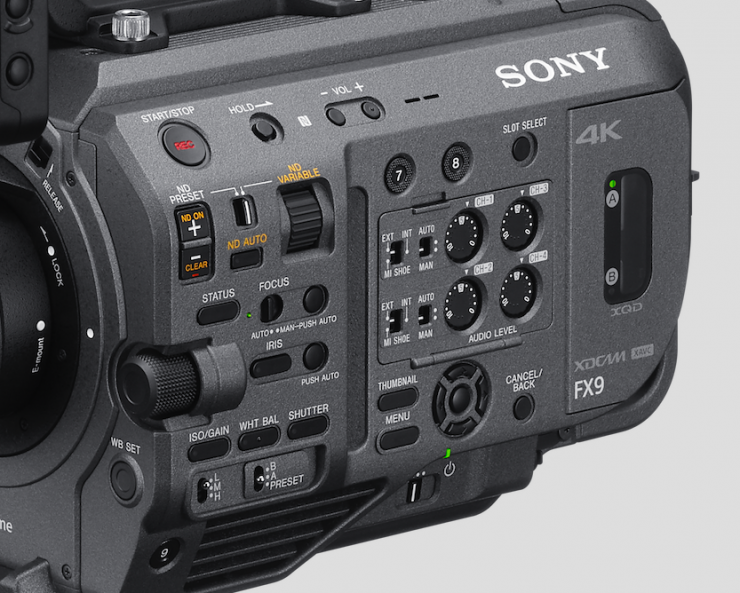
FX9 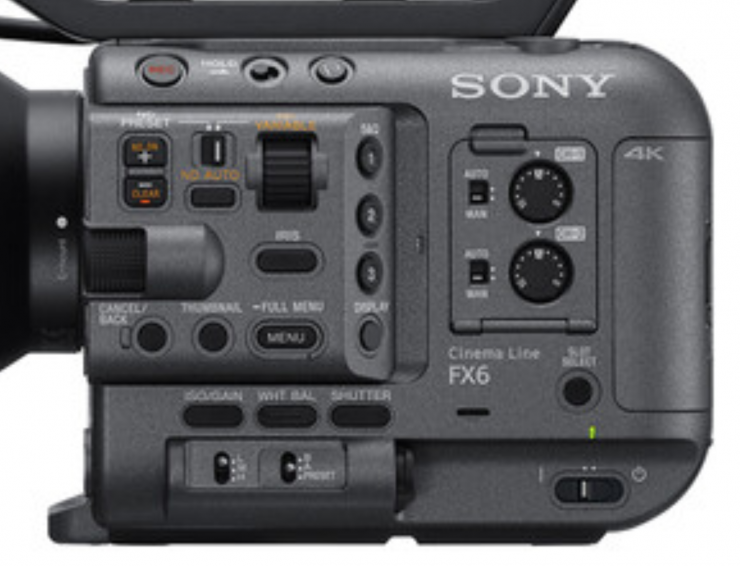
FX6 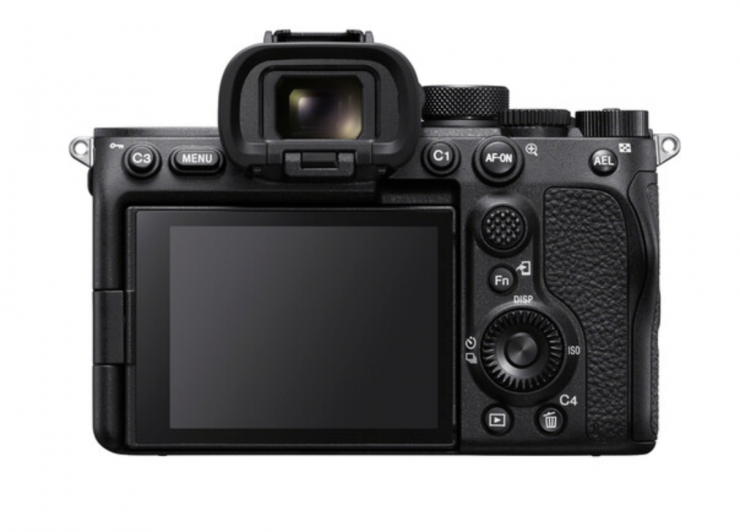
a7S III
The FX3’s control and button placement have virtually nothing in common with any of the other cameras in Sony’s Cinema Line. The controls have a lot more in common with the a7S III and another Sony alpha series cameras.
Sony has really tried to minimize the number of physical buttons and switches with the FX3. All the key buttons are on the right-hand side of the camera where the user will grip the camera for handheld use.
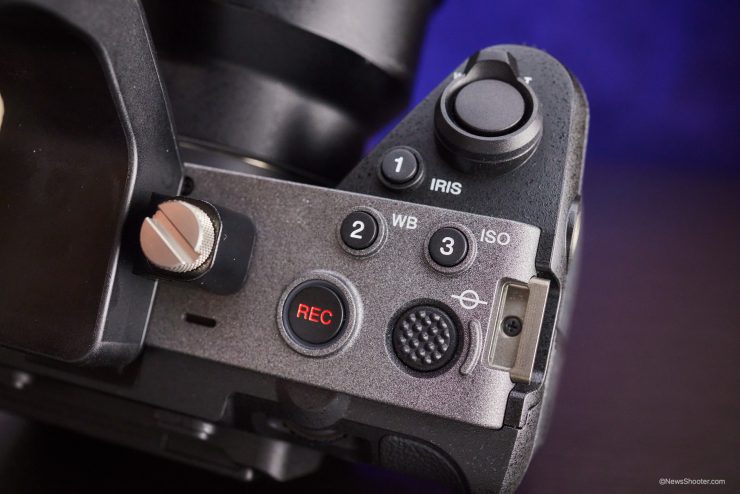
On the top right-hand side, you will find a Record button, three custom buttons which by default are set to WB, ISO, and IRIS.
There is also a zoom lever that can be used to control compatible Sony E-mount power zoom lenses. In a nice touch, you can also use the zoom lever when you have the Clear Image Zoom function enabled on the camera.
On the back right-hand side of the camera, there is a Menu button and a series of buttons that are similar to what you find on an a7S III. Here you can control the Shutter Speed, enter a Playback mode, and Delete clips.
On the front right-hand side of the camera, there is also another customizable button that is preset as a record button.
On the back left-hand side of the camera, you will find the On/Off power switch and a Mode button. A Mode button? What could that be used for? Well, I am glad you asked. The FX3 has a little secret, it can be used to take still images. You can capture both JPEG or RAW images at 12.2MP.
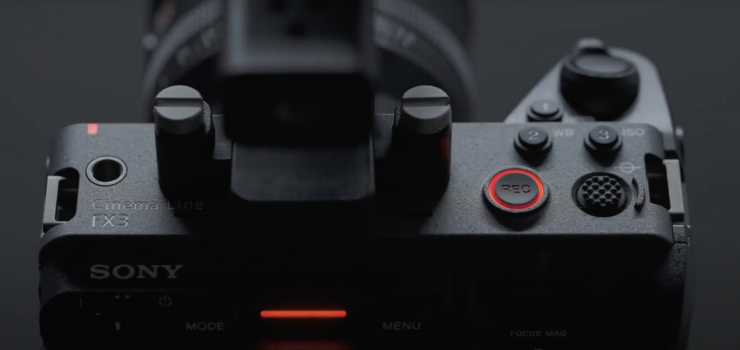
You need to be aware that you can’t shoot stills when you are in the video mode. However, in stills mode, if you press the REC button that does trigger video recording.
Having stills capabilities should be viewed as a bonus feature and if you need to take the odd photo then this camera still allows you to do so. If you are doing multi-media work then the FX3 becomes a viable option for some people if you don’t require high MP images.
Menus
Sony menus have improved with recent camera releases, and the FX3 continues with that trend. The menu structure of the FX3 is the same as the a7s III when in video mode.
The menus have been separated for video and stills. To switch between the two you push the MODE button. Once you do this the menus will change.
According to Erik, many of the functions cross over when shooting stills. Items such as white balance, iris, and ISO work in both modes.
140 Menu items can be assigned to a total of 15 buttons.
Despite the improvements, I still find the menus on Sony cameras to be lagging behind some of the competition.
Touchscreen Operation
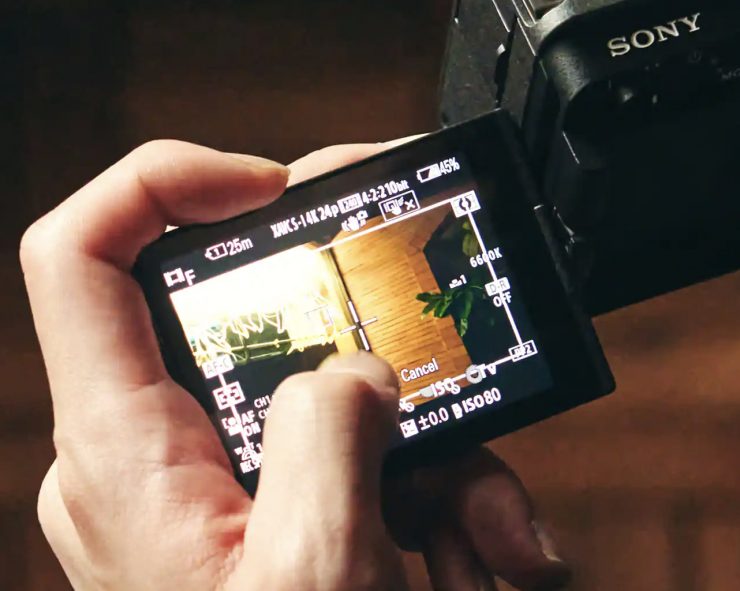
Just like the a7S III, the FX3 has the same touchscreen operation available from its LCD screen. This allows you to access menu features and make changes to certain camera parameters.
It also allows you to use touch AF directly on the screen.
What can it record?
The FX3 record in UHD or HD in various flavors of XAVC at up to 600Mb/s. Given the small megapixel count, this camera will only ever be capable of recording in resolutions of 4K. This is something you need to keep in mind long term, even though I personally think 4K will be fine for many years to come.
Unlike the FX6 there are no options to record in 4K DCI. The recording options on the FX3 are exactly the same as those on the a7S III.
These are the following codec choices that are available in UHD:
- XAVC HS
- XAVC S
- XAVC S-I
If you are shooting in HD you can choose from:
- XAVC S
- XAVC S-I
XAVC S is a subset format, using many of the superlative techniques and technologies used in XAVC, but it is intended for consumer products and workflows. It supports 1920×1080 HD and the 3840×2160 pixel version of 4K, known as Quad Full HD, QFHD, UltraHDTV or UHDTV. XAVC S is a lighter codec with Long GOP compression and relatively small recorded file sizes. XAVC S uses the .MP4 file wrapper for greater compatibility and suitability in consumer workflows.
You may be familiar with XAVC and XAVC S, but the new flavors are XAVC, XAVC HS, and XAVC S-I.
XAVC S-I is an All-I codec with a data rate of up to 600 Mb/s. XAVC-HS uses H.265 compression so that file sizes are no more than 200 Mb/s. It is claimed to offer twice the efficiency of XAVC S but with the same level of quality. Even 4K 120p can be recorded in XAVC S-I.
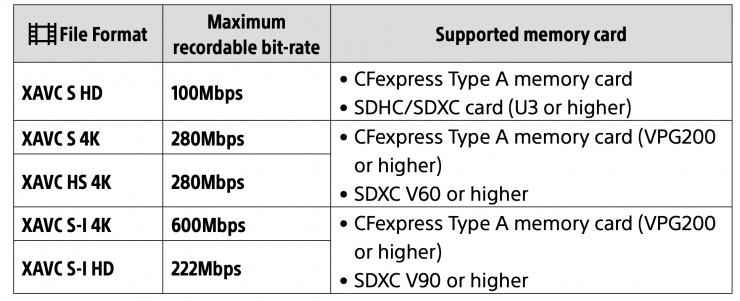
You can record all these XAVC options on either a CFexpress Type A card or a V90 speed-rated SDXC card. If you are not recording in XAVC S-I you can use slower rated SD cards.
If you don’t want to record in 4:2:2 10-bit you can also choose to record in 4:2:0 10-bit or 4.2.0 8-bit at lower bitrates as well.
H.265/XAVC HS 4:2:2 10-Bit
UHD 4K (3840 x 2160) at 23.976p/25p/29.97p/50p/59.94p/100p/119.88p [50 to 280 Mb/s]
H.265/XAVC HS 4:2:0 10-Bit
UHD 4K (3840 x 2160) at 23.976p/25p/29.97p/50p/59.94p/100p/119.88p [30 to 200 Mb/s]
H.264/XAVC S-I 4:2:2 10-Bit
UHD 4K (3840 x 2160) at 23.976p/25p/29.97p/50p/59.94p [240 to 600 Mb/s]
Full HD (1920 x 1080) at 23.976p/25p/29.97p/50p/59.94p [89 to 222 Mb/s]
H.264/XAVC S 4:2:2 10-Bit
UHD 4K (3840 x 2160) at 23.976p/25p/29.97p/50p/59.94p/100p/119.88p [100 to 280 Mb/s]
Full HD (1920 x 1080) at 23.976p/25p/29.97p/50p/59.94p/100p/119.88p [50 Mb/s]
H.264/XAVC S 4:2:0 8-Bit
UHD 4K (3840 x 2160) at 23.976p/25p/29.97p/50p/59.94p/100p/119.88p [60 to 200 Mb/s]
Full HD (1920 x 1080) at 23.976p/25p/29.97p/50p/59.94p/100p/119.88p [16 to 100 Mb/s]
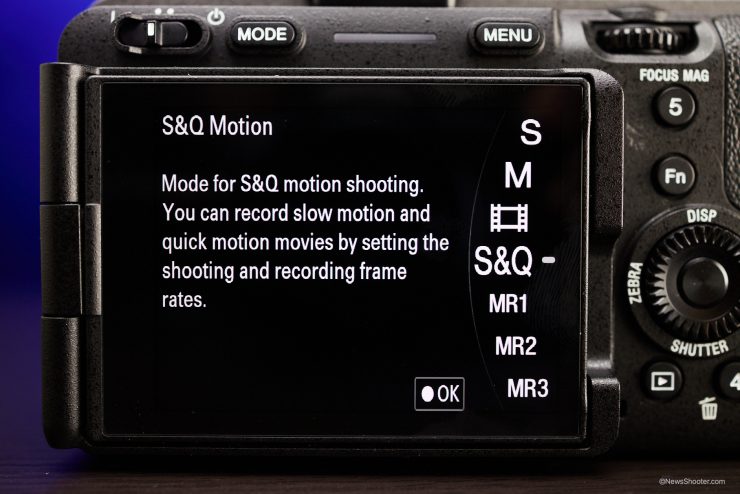
SLOW & QUICK MOTION (SHOOTING FRAME RATE)
NTSC mode: 1 fps, 2 fps, 4 fps, 8 fps, 15 fps, 30 fps, 60 fps, 120 fps, 240 fps, PAL mode: 1 fps, 2 fps, 3 fps, 6 fps, 12 fps, 25 fps, 50 fps, 100 fps, 200 fps
Please be aware that 100/120/200/240fps are only available in the full-frame shooting mode. They don’t work in the S35 mode.
These are all good options and it is nice to see that Sony has offered shooters a variety of different forms of XAVC to choose from depending on what their needs may be.
You can also record HD proxies on the FX3
On paper, the FX3 offers you higher frame rates in UHD than the more expensive FX9. The only way to get UHD 120P out of the FX9 is via the expensive and cumbersome XDCA-FX9 extension kit and record it externally to an Atomos product.
External RAW recording
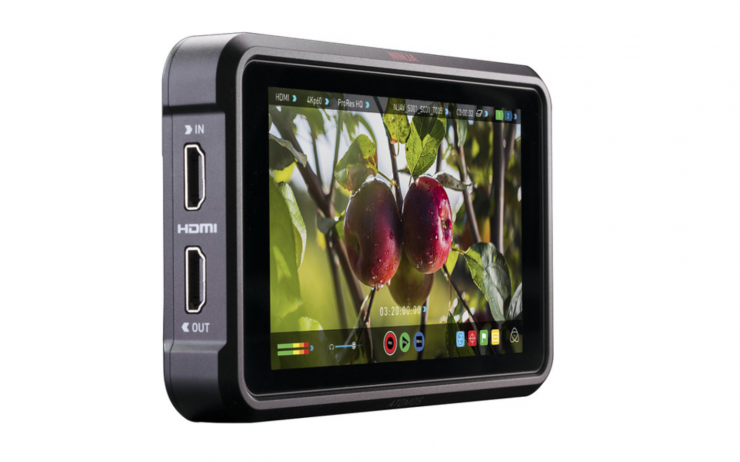
With patent issues prohibiting internal compressed RAW recording, the FX3 is only capable of recording RAW externally. But unlike with the FX6, which currently can only output RAW over SDI to the Atomos Shogun 7, with the FX3 you can output RAW over HDMI to an Atomos Ninja V.
With the FX3 you can output the exact same 4.2K (4264 x 2408) up to 59.94p 16-bit linear RAW signal as you can from the a7S III and FX6. This signal is then recorded as 12-bit ProRes RAW file.
What can it output over HDMI?
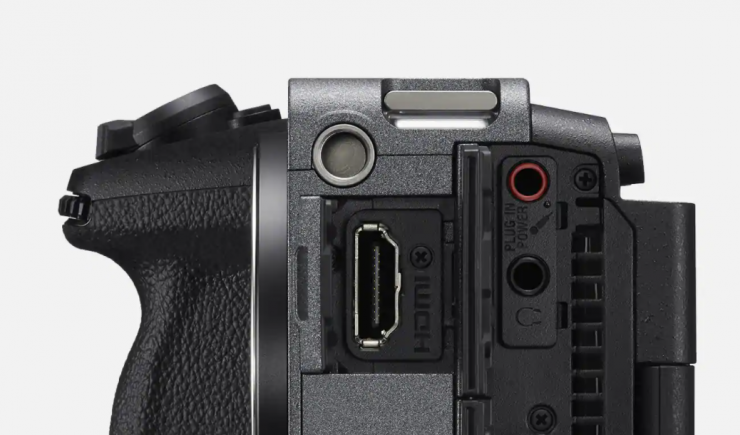
Below is what the camera is capable of outputting over HDMI:
Raw 16-Bit
4.2K (4264 x 2408) up to 59.94p
4:2:2 10-Bit
UHD 4K (3840 x 2160) at 23.976p/25p/29.97p/50p/59.94p
Full HD (1920 x 1080) at 23.976p/50p/59.94p
Full HD (1920 x 1080) at 50i/59.94i
4:2:0 8-Bit
UHD 4K (3840 x 2160) at 23.976p/25p/29.97p/50p/59.94p
Full HD (1920 x 1080) at 23.976p/50p/59.94p
Full HD (1920 x 1080) at 50i/59.94i
What media does it use?
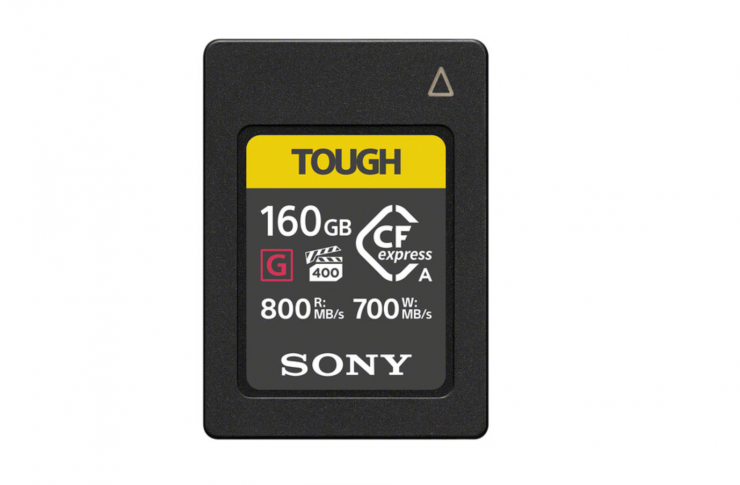
Just like the a7S III and the FX6, the FX3 utilizes the new CFexpress type A cards. This doesn’t mean you have to use the new cards, the camera is still backward compatible with SD UHS-II cards as well, however, you do need the faster CFexpress type A cards if you want to record frame rates over 100P.
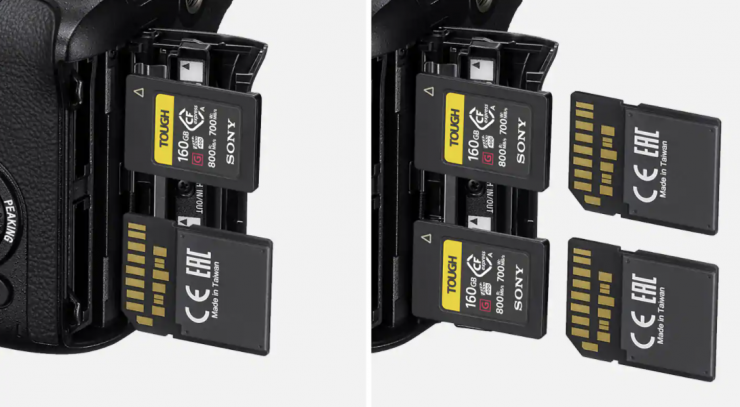
The FX3 has dual card slots so you can record to both card slots simultaneously if you want to.
The FX3 is just the third commercially available camera that I know of that can use CFexpress type A cards. The only other cameras are the a7S III and FX6.
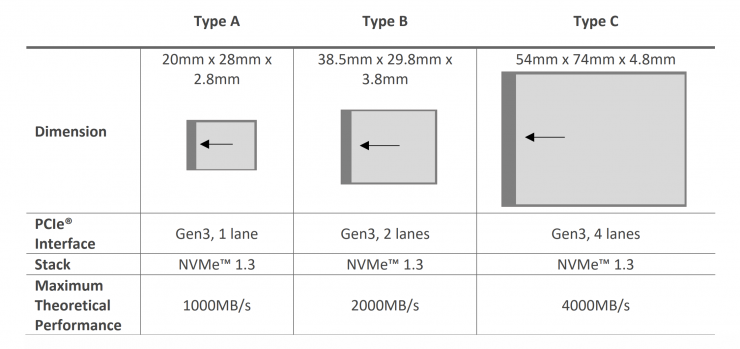
CFexpress was announced back in early 2019, but so far we have only seen CFexpress Type B cards being utilized. There are actually three different standards of CFexpress cards. The Type A card is the slowest of the three standards. But in saying that, it is still capable of theoretical speeds of up to 1000MB/s.
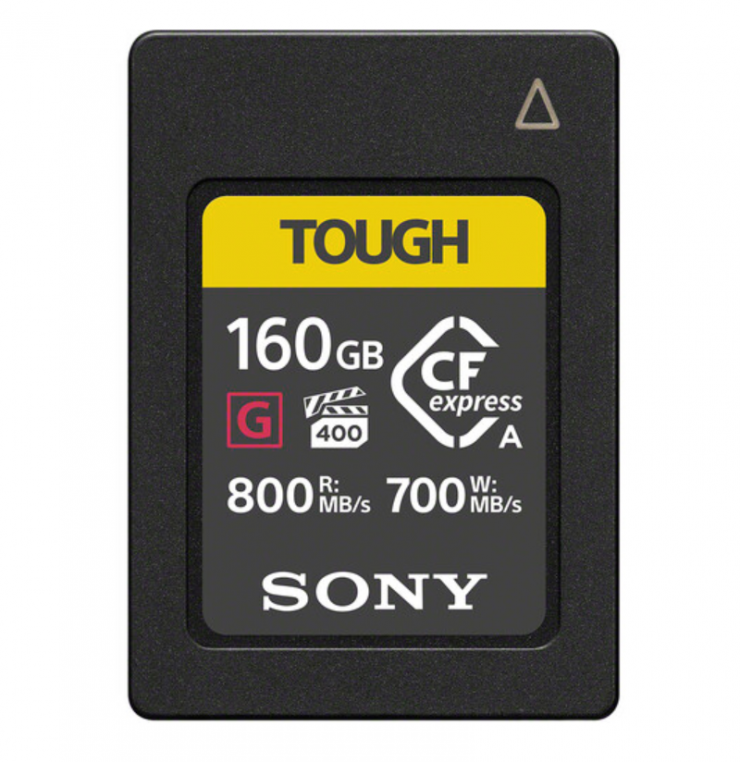
The only trouble with CFexpress Type A cards is that they are expensive and at the moment capacities are limited to just 160GB. A 160GB card will set you back almost $400 USD.
The video recording formats and compatible memory cards are as follows:
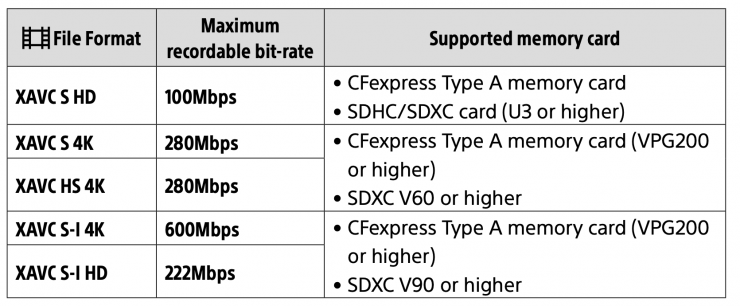
Power Draw & Batteries
The FX3 utilizes the same Sony NP-FZ100 batteries as the a7S III.
You can also power the camera via a USB-PD. this allows you to keep the camera powered up for extended periods of time. You do need to have the battery in the camera when you do this. While it won’t charge the battery while you are doing this, it will not drain the battery either.
PD-compatible USB chargers and mobile batteries can be connected to the camera’s USB Type C port, to supply power or to recharge the internal battery at 3 to 4-times the speed of conventional power supplies.
The camera itself draws the following:
- [Movie] Approx. 7.3W
- [Still image] Approx. 3.4W
As a comparison, the Sony FX6 draws 18W and the Canon C70 draws 14.6W. The RED KOMODO draws 45W. The BMPCC 6K Pro with the optional viewfinder draws 26W.
User LUTs?
On the FX6 you can load up user LUTs as well as scene files. With the FX3 you can’t load up your own LUTs. There is only the option to apply a Gamma Display Assist when you are shooting in LOG or HLG. If you want to use a LUT then you would need to hook up an external monitor or EVF that has the ability to import or use LUTs.
I reached out to Sony to ask them why the camera doesn’t have the ability to import any LUTs, and I was told: ‘The FX3 does not currently accept user LUTs, like Alpha 7s III. User LUT input is one of the additional values that come with the higher price point of FX6 (as well as FX6 having Electronic Variable ND, 4K DCI, and Timecode In/Out). S-Cinetone is the default Picture Profile, or you can use the built-in LUT. S-Cinetone is included in Alpha One, but as of yet is not in any other mirrorless Alpha cameras.’
No anamorphic
Just like the FX9, FX6, and a7S III, the FX3 isn’t capable of recording in any anamorphic modes. That is reserved for the VENICE.
Timecode/SDI/HDMI?
It is no big surprise that Sony hasn’t included SDI or timecode In/Out capability on the FX3. The main reasons for this are undoubtedly due to lack of space and to maintain product differentiation.
Not having any timecode In/Out capability will probably mean that this camera will not obtain Netflix certification as that is one of the requirements. It was smart of Canon to give the C70 a BNC timecode In/Out as this is one of the reasons it obtained Netflix certification.
Not having a dedicated timecode In/Out means that if you do want to timecode sync up the FX3 to other cameras you will have to utilize something like a Tentacle Sync and input timecode through the onboard 3.5mm mic input. This is still a good option because of the camera’s ability to record up to 4 channels of audio.
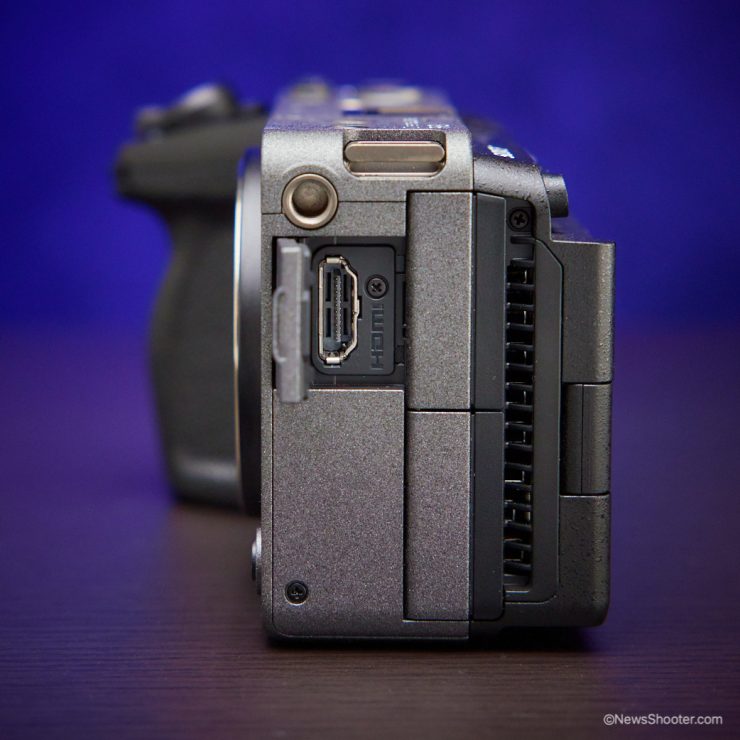
You do get a full-sized HDMI output just like the a7S III.
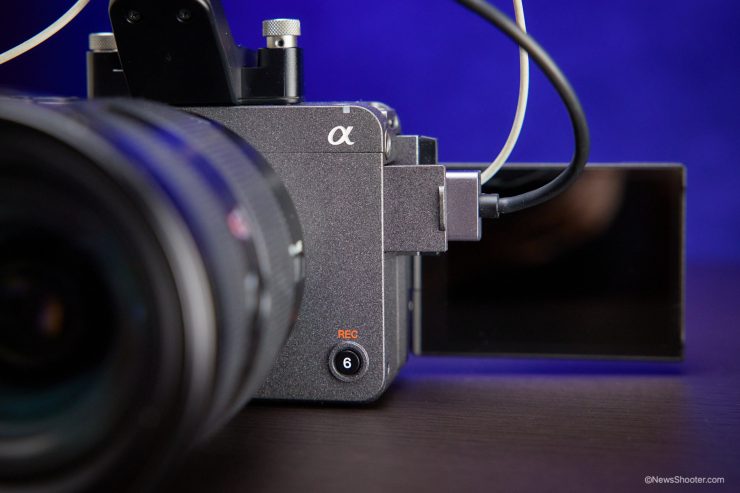
I like that Sony has placed the HDMI input further forward on the camera body, just like on the a7S III, so the articulating LCD screen won’t hit it.
Could Sony have put in at least a mini SDI connector on the camera? Probably, but they didn’t. I think the main reason for sticking with HDMI is that most affordable monitors and other accessories tend to only have HDMI inputs. I assume that this is Sony’s logic for using HDMI instead of SDI. There is obviously not enough space for both HDMI and SDI, so like it or not, HDMI is probably the better option for the target audience of this camera.
Audio
Audio functionality is very important, especially with cameras that are being aimed at solo operators. Sony has clearly thought this through and by making use of their existing XLR adapter module technology they are able to offer users a pretty good solution.
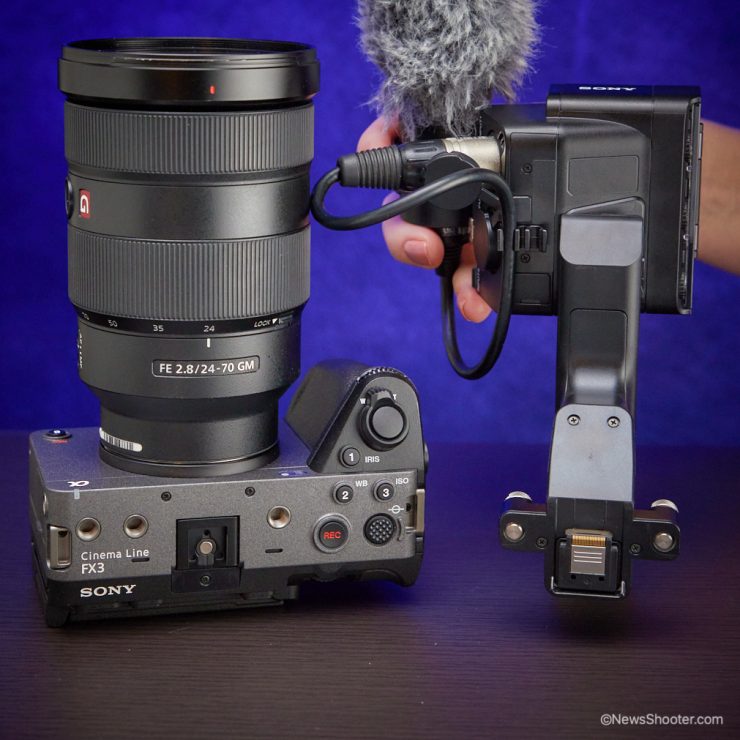
The FX3 comes with what looks to be the Sony XLR-K3M. This is physically attached to the included top handle and it allows the camera to be able to record up to 4 channels of audio.
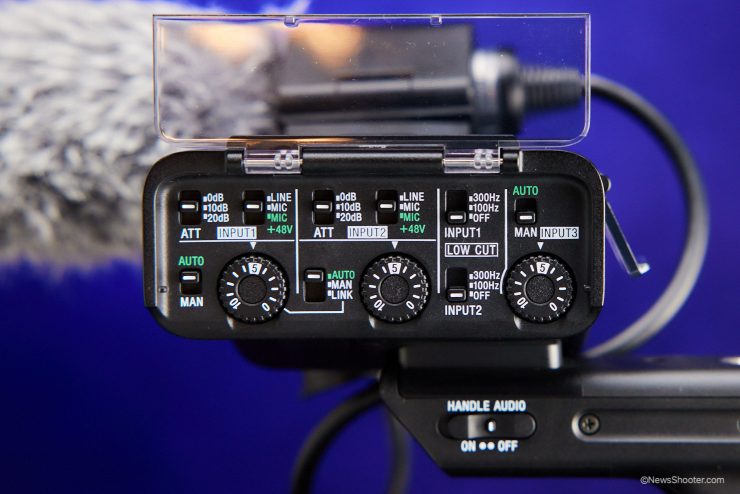
The XLR module lets you choose between inputting mic and line and it can also provide +48V phantom power. There is also a switch on the handle that lets you turn off the audio coming from the XLR module.
Below are some of the options you could use for recording four channels of audio:
- XLR Input 2-channels + Internal microphone (2 channels)
- XLR Input 2-channels + Internal Microphone + 3.5mm mic input
- XLR Input 2-channels + Stereo splitter cable going into the 3.5mm mic input
If you go into the Quick Audio menu you can control and adjust all four channels of audio. There is also a menu for 4ch Audio Monitoring that allows you to select the audio channel combination to output to the
headphone terminals when the audio channel number is set to 4ch.
If you do decide to use the camera without the top handle you can still record audio via the onboard 3.5mm mic input. This is something you can’t do with the FX6.
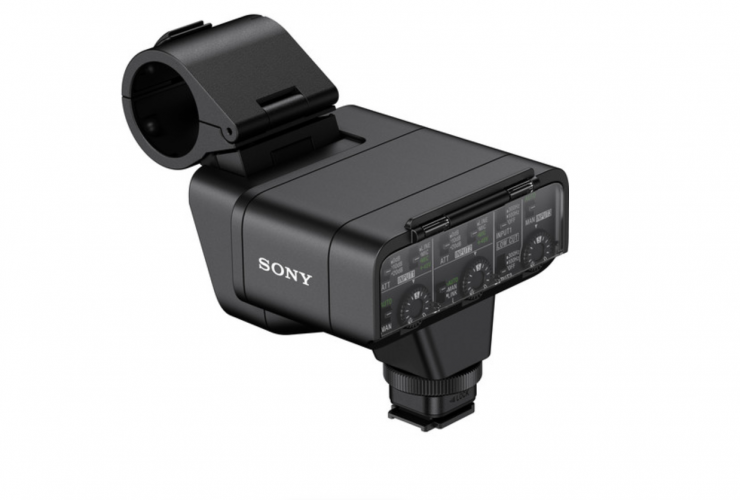
You could also remove the top handle and utilize the MI hot shoe to add another audio module directly to the camera body if you wanted to make the camera more compact.
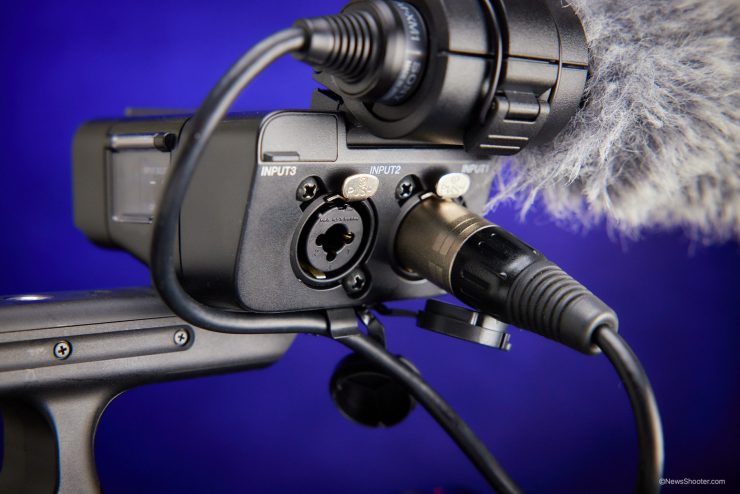
It is a bit puzzling as to why you can’t remove the audio module from the handle and just attach it to the MI shoe directly on the camera body. I think most users would have preferred to have seen the audio module be detachable from the camera handle.
My only concern with running audio through the MI hot shoe is that it could be prone to issues. When the original XLR audio module came out for the a7S it was prone to channel bleed and it caused me all sorts of headaches on a shoot. I do believe that those issues have been solved with subsequent models, but it is worth keeping in mind.
Audio is where Sony seems to have a big advantage over Canon. Canon doesn’t have any type of XLR audio module that you can use with the C70 or R5/R6. Considering a lot of users of small-sized cameras like these are going to be doing their own audio, the audio options need to be good.
As I have already alluded to, the FX3 also features a stereo onboard microphone in the body of the camera itself.
You need to be aware that the FX3 does not come with an external microphone.
Tally Lights
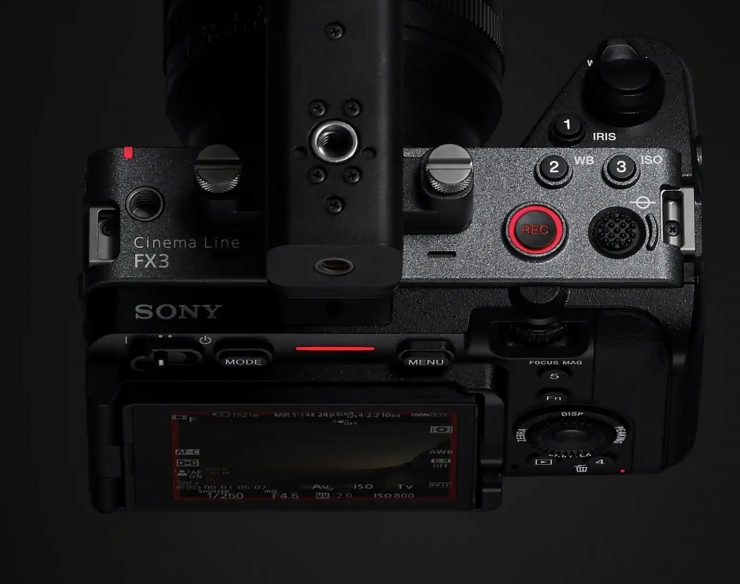
The FX3 comes with three tally lights which are handy if you are using the camera in multi-camera scenarios or just as a B camera. If you are a solo operator running two cameras it is nice to be able to see a tally light so that you know the camera is recording.
You can individually select which tally lights you want to turn on/off.
Connectivity & Remote Control
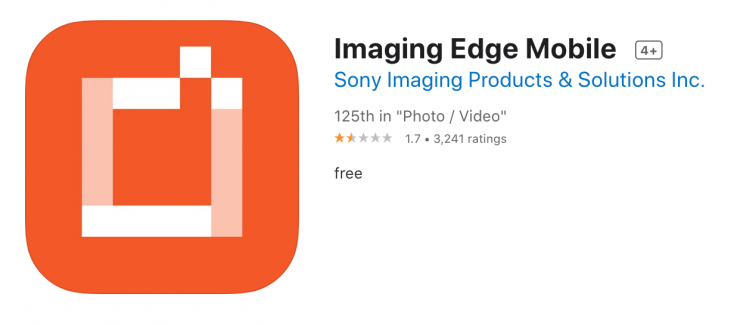
Unlike the FX6, FX9, and VENICE, the FX3 doesn’t work with Sony’s Content Browser Mobile. Instead, you need to use Imaging Edge just like the Alpha series cameras.
For remote control, you can use either Imaging Edge Desktop or Imaging Edge Mobile.
The camera also features the following connectivity:
- Wireless LAN (Wi-Fi) 2.4GHz and 5GHz (2×2 MIMO)
- Wired LAN via compatible USB-Either adapter (1000BASE-T)
- USB connection via USB-C terminal (Superspeed USB 5Gbps)
- Mobile Tethering (LTE 4G/5G) via Wi-Fi
You can also do FTP transfer.
Compatible Accessories
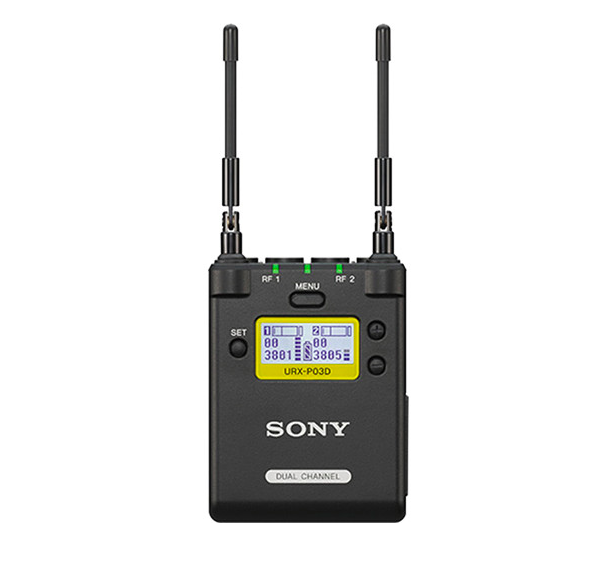
The FX3 can utilize a range of compatible accessories.
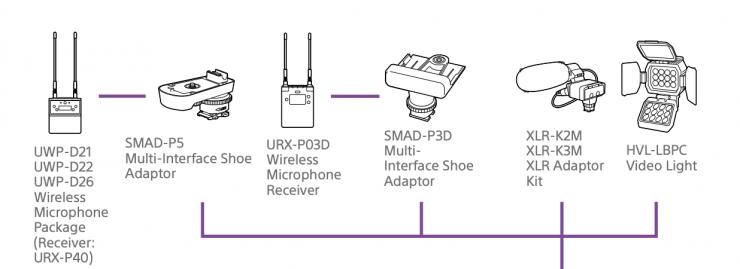
These include compatibility with the new UWP-D series of wireless microphones via Multi-Interface Shoe (MI Shoe) with digital audio interface.
Is the FX3 what the a7S III should have been?
In a lot of ways, the FX3 is the a7S III. It makes me wonder, that given the low MP count of the a7S III, why didn’t Sony just release the FX3 as the a7S III.
I wouldn’t imagine that too many users are buying an a7S III to use primarily for photography. The majority of people purchasing an a7S III are arguably using the camera for video.
If I had just purchased an a7S III primarily to use as a video camera I would probably be petty upset with Sony for releasing this camera. The FX3 is essentially what everyone wanted in a new a7S.
Price & Availability
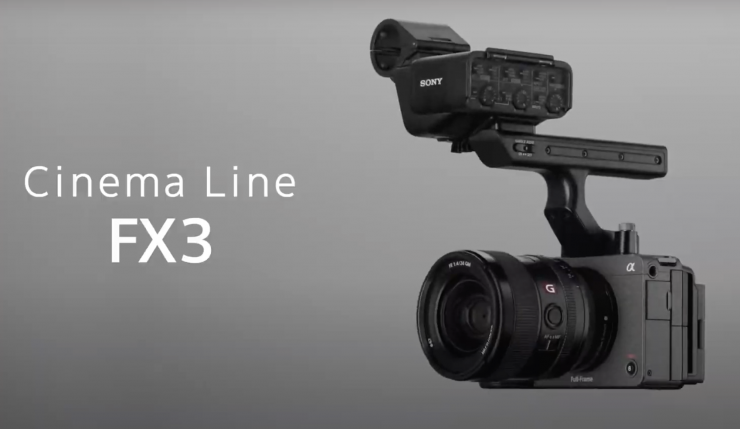
At $3899.99 USD the FX3 is very competitively priced when you look at its main competition. Its main competition arguably comes in the form of the Canon C70, RED KOMODO, Panasonic S1H, BMPCC 6K, BMPCC 6K Pro, and Sony’s own FX6 and a7S III.
The FX3 is expected to start shipping in March.
$3899.99 USD seems to be a reasonable price given its feature set. You could literally buy an FX6 and an FX3 for less than the price of an FX9. This alone could be tempting for quite a lot of users.
So how does the price compare to some of the competition? Below you can see:
| PRICE | |
| Sony FX3 | $3,899.99 USD |
| Sony a7S III | $3,498 USD |
| Sony FX6 | $5,999.99 USD |
| Canon C70 | $5,499 USD |
| RED KOMODO | $5,995 USD |
| Panasonic S1H | $3,997.99 USD |
| Blackmagic BMPCC 6K | $1,995.00 USD |
| Blackamgic BMPCC 6K Pro | $2,495 USD |
At $3899.99 USD it is only $401.99 USD more than an a7SIII. It is considerably more affordable than a RED KOMODO or a Canon C70.
It is more expensive than a BMPCC 6K and 6K Pro, but slightly cheaper than a Panasonic S1H.
If you factor in that the Sony XLR-K3M Dual-Channel Digital XLR Audio Adapter Kit with Shotgun Microphone costs $598 USD, then the FX3 is actually more affordable than the a7S III.
Where does this camera sit?
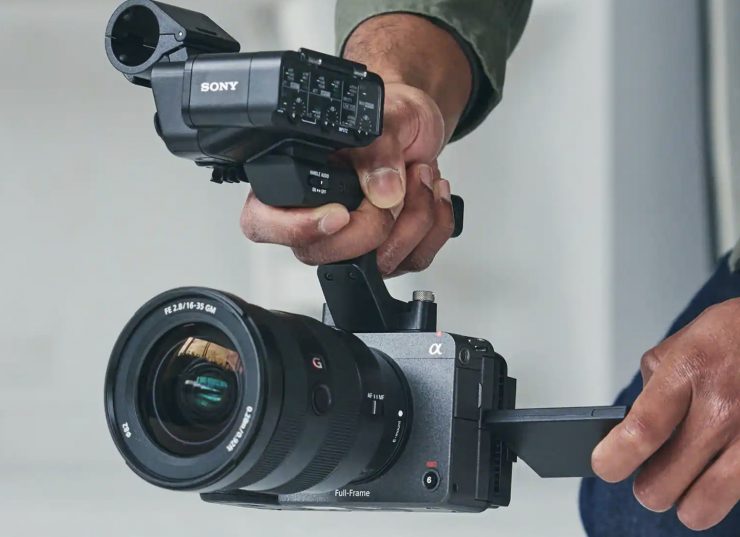
Whether you love Sony cameras or loathe them, the Japanese company has always priced its mid to lower-end cameras fairly aggressively. As I have mentioned in recent articles, the camera market has started to divide into two key sectors; the under $10K category and the high end. There really isn’t much in between. The FX3 falls clearly into the lower sector of that under $10K category.
Sony is probably a little behind the 8 ball with this announcement as a lot of potential buyers of a FX3 have probably already bought an a7S III. Other cameras such as the Canon C70 and the RED KOMODO are already back-ordered in most parts of the world and a lot of the other competing cameras have already been around for quite some time. The recently announced BMPCC 6K Pro is also likely to affect FX3 sales.
Half the battle is being first to market and providing something your competitors don’t. Just look at the F5, F55, FS5, and FS7. All of these cameras were released at a time when they didn’t have any direct competition.
While the FX6 started shipping around the same time as the Canon C70, the FX3 comes to market after a lot of potential buyers of this camera have already invested in the a7S III.
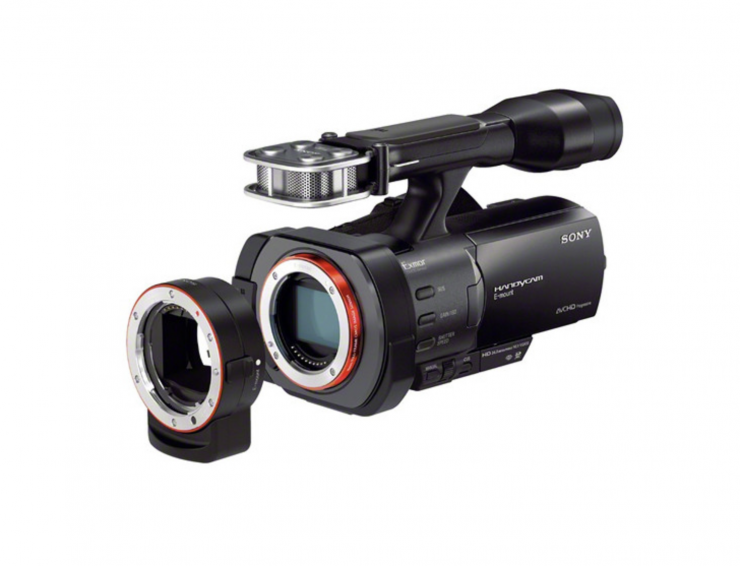
Despite a large range of full-frame mirrorless hybrids being available, the FX3 could arguably be considered the first full-frame digital cinema camera from one of the large Japanese manufacturers to come in at under $4,000 USD. Yes, Sony did release the full-frame E-mount NEX-VG900 way back in 2012, but that was a different kettle of fish.
I don’t think it is that surprising that the FX3 isn’t a dumbed-down version of an FX6. It isn’t a wolf in sheep’s clothing, but more of a sheep wearing a sheepskin top. Essentially the FX3 is an a7S III that is just wrapped up slightly differently.
There is a strong possibility that owners of the a7s III will be angered by this announcement, however, I don’t think they need to suddenly start posting their cameras up for sale on Ebay. The a7S III is an FX3. By adding an XLR audio module and a cage, you essentially do have an FX3.
People may be asking why it doesn’t use a larger megapixel sensor or why it doesn’t shoot in resolutions over 4K, but in my personal opinion, it doesn’t need to. A large proportion of working professionals buying and using cameras in this price range are not being requested to shoot in resolutions above 4K. 4K is still perfectly acceptable and will still be for quite some time. Besides, if you do need more than 4K then there are plenty of other cameras on the market that will meet your requirements.
Who is it aimed at?
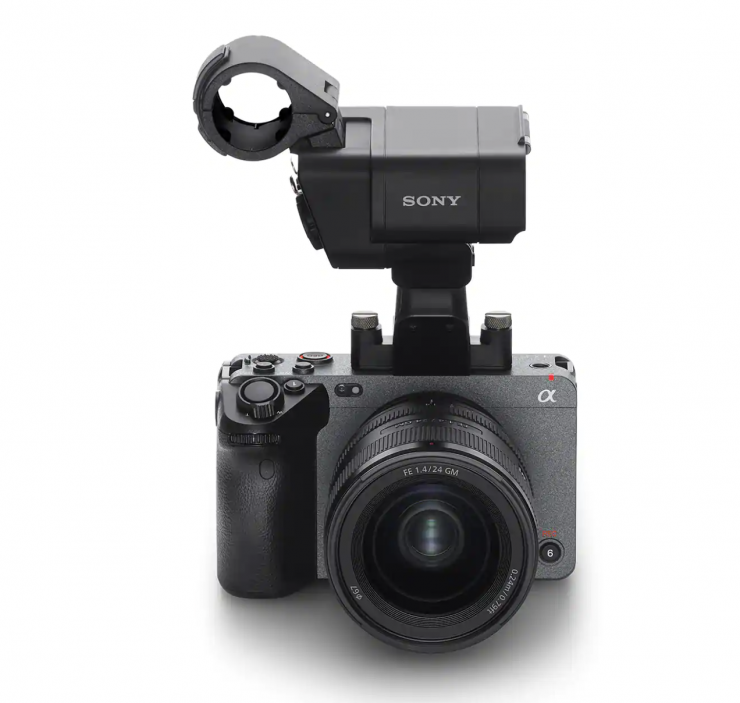
The FX3 is being aimed primarily at the same target audience that would be looking at cameras such as the a7S III, FX6, BMPCC 6K & 6K Pro, Panasonic S1H, Canon C70, etc. The FX3 looks to be an affordable camera for professional users who are shooting news, events, documentaries, and corporate productions. Its small size makes it suitable for solo operators, but I do feel that without having built-in ND, an FX6 or C70 makes a lot more sense.
Its small size and low weight will also make the FX3 very suitable for anyone who wants to use it on a drone, a gimbal, or even a car mount. Compact cameras like this certainly have their advantages in certain shooting situations.
Whether or not people shooting news, events, documentaries, and corporate productions will want to use a camera that doesn’t have built-in ND is debatable. The fact that you can only shoot HD in a Super 35 mode may be a deal-breaker for some potential users. That is why Sony will continue to sell the FS7 M2 and FS5 M2. Although in saying that, with a lot of people using speedboosters on S35 Sony E-mount cameras there is clearly a demand for the full-frame esthetic.
The FX3 can be used as your main camera, a B camera to the FX6 or FX9, or in combination with the a7S III. while it won’t be suitable for some shooting situations it is going to be a good solution for a lot of the people it is targeting.
Protecting your Line-up
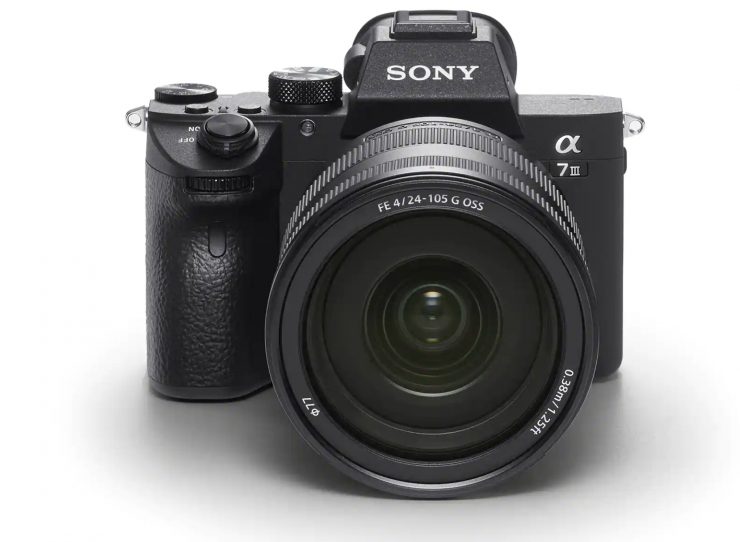
Sony a7S III 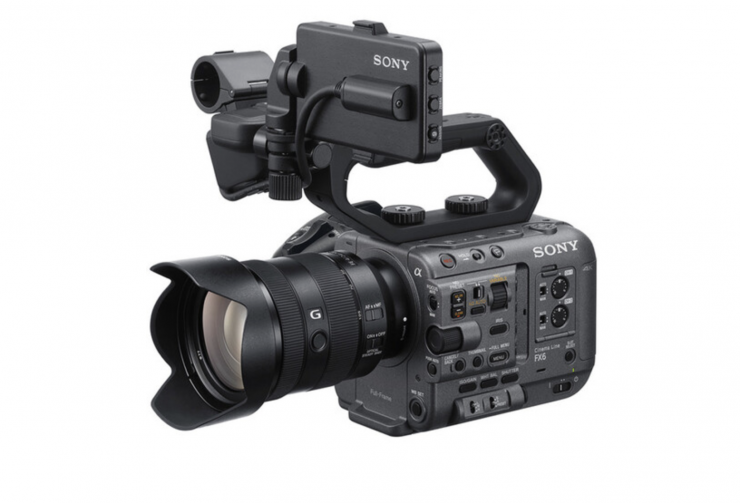
Sony FX6 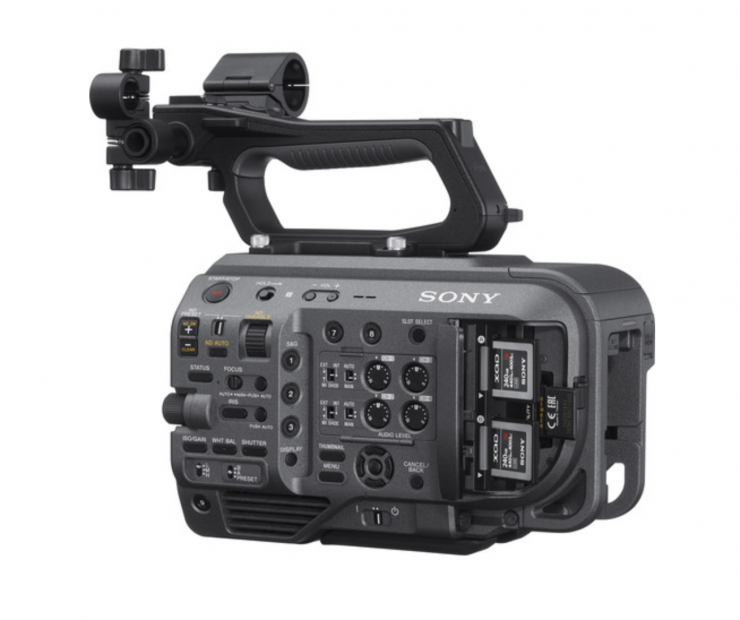
Sony FX9
The days of protecting your line-up seem to be disappearing. Historically, Sony always stayed away from offering features in mirrorless cameras and lower-end digital cinema cameras that you would find in their more expensive offerings. This ultimately left a lot of people frustrated and disappointed, but times have changed.
You could very well argue that Sony created a camera that they already had. As I mentioned earlier in the article, the FX3 really does overlap with the a7S III to the point where it is bound to upset people who bought that camera recently.
The worry for any manufacturer (and this goes for just about any industry) is that if you put the same high-end features from a more expensive model into a lower-end model you could end up hurting sales. If Tesla put the same features from an S series into a Model 3 series and then sold that car for a lot less money, no one would buy the S series.
Sony has had to walk a very fine line with the FX3 so that they didn’t step on the toes of the FX6. While I think they have managed to do that, it looks like they squarely stomped on the feet of the a7S III.
How does it compare to the FX6?
Let’s compare the two (at least on paper).
| FX6 | FX3 | |
| Sensor | Full-Frame 10.2MP back-illuminated CMOS Exmor R | Full-Frame 10.2MP back-illuminated CMOS Exmor R |
| Dual Native ISO | No (High Sensitivity mode) | No (High Sensitivity mode) |
| Dynamic Range (Claimed) | 15+ stops | 15+ Stops |
| IBIS | No | Yes |
| Electronic Variable ND | Yes | No |
| Picture Profiles | S-Log3, S-CineTone, S-Gamut3.cine, S-Gamut3 | S-Log3, S-CineTone, S-Gamut3.cine, S-Gamut3 |
| Internal Recording | 4K DCI up to 59.94p XAVC Intra 422 10-bit (Class 300) UHD up to 120p XAVC Intra 422 10-bit (Class 300) HD up to 240p XAVC Intra 422 10-bit (Class 100) | UHD up to 59.94p XAVC Intra 422 10-bit (Class 300) UHD up to 120p XAVC Intra 422 10-bit (Class 300) HD up to 240P XAVC Intra 422 10-bit (Class 100) |
| External Recording | 4K DCI up to 59.94p 4:2:2 10-bit 16-bit linear RAW output over SDI | UHD up to 59.94p 4:2:2 10-bit 16-bit linear RAW output over HDMI |
| HDMI Out | Yes | Yes |
| SDI Out | Yes, 1x SDI | No |
| Timecode In/Out | Yes (BNC) | No |
| Genlock | No | No |
| Recording Media | 2x CFexpress type A | 2x CFexpress type A |
| LCD Screen | Yes | Yes |
| EVF | No | No |
| Audio | 2x XLR Support for 4 channels of audio | XLR Module Support for 4 channels of audio 1x 3.5mm Mic Input |
| Headphone Jack | Yes | Yes |
| Included Battery | Yes | Yes |
| Weight | 890g (Body Only) | 640g (Body only) |
Despite offering a lot of similarities, the FX6 does offer quite a lot of functionality and features that you won’t find on an FX3. These include:
- SDI
- Timecode In/Out
- Genlock
- Electronic variable ND
- Better ergonomics for shoulder mounting
- User uploadable LUTs
How does it compare to the a7S III?
| FX3 | a7S III | |
| Sensor | Full-Frame 10.2MP back-illuminated CMOS Exmor R | Full-Frame 12.1 MP back-illuminated CMOS Exmor R |
| Dual Native ISO | No (High Sensitivity mode) | No (High Sensitivity mode) |
| Dynamic Range (Claimed) | 15+ stops | 15+ Stops |
| IBIS | Yes | Yes |
| Electronic Variable ND | No | No |
| Picture Profiles | S-Log3, S-CineTone, S-Gamut3.cine, S-Gamut3 | S-Gamut, S-Gamut3, S-Gamut3.Cine |
| Internal Recording | UHD up to 59.94p XAVC Intra 422 10-bit (Class 300) UHD up to 120p XAVC Intra 422 10-bit (Class 300) HD up to 240p XAVC Intra 422 10-bit (Class 100) | UHD up to 59.94p XAVC Intra 422 10-bit (Class 300) UHD up to 120p XAVC Intra 422 10-bit (Class 300) HD up to 240P XAVC Intra 422 10-bit (Class 100) |
| External Recording | UHD up to 59.94p 4:2:2 10-bit RAW up to 59.94p | UHD up to 59.94p 4:2:2 10-bit RAW up to 59.94p |
| HDMI Out | Yes | Yes |
| SDI Out | No | No |
| Timecode In/Out | No | No |
| Genlock | No | No |
| LUTS | No | No |
| Recording Media | 2x CFexpress type A | 2x CFexpress type A |
| LCD Screen | Yes | Yes |
| EVF | No | Yes |
| Audio | 2x XLR Support for 4 channels of audio | 3.5mm Mic Input |
| Headphone Jack | Yes | Yes |
| Included Battery | Yes | Yes |
| Weight | 640g (Body only) | 614 g (Body Only) |
As you can see, on paper these cameras are quite similar. With the a7S III, you get an EVF, with the FX3 you get an audio module.
What is it similar to?
Well, it is similar to the a7S III as I have already mentioned, but the most obvious non-Sony cameras that could be viewed as competitors would be the RED KOMODO and Canon C70. I have thrown the Z CAM E2-F6 in there as well.
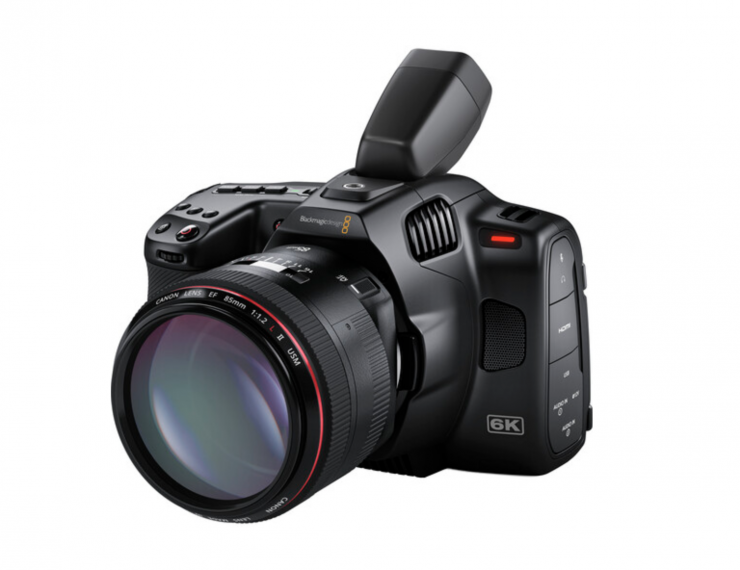
You could also make a strong case for including other cameras such as the BMPCC 6K & 6K Pro, Sigma fp, and other mirrorless hybrids like a Panasonic S1H.
I am not going to compare every single camera that could be considered competition because we would be here all day.
So how do some of them compare on paper?
| Sony FX3 | Z CAM E2-F6 | Canon C70 | RED KOMODO | |
| Sensor | Full-Frame 10.2MP back-illuminated CMOS Exmor R | 37.09 x 24.75 mm (Full-Frame) | 26.2 x 13.8 mm (Super35) | 27.03 x 14.26 mm (Super35) |
| Weight | 640g / 22.57 oz | 1.09kg / 2.4 lb | 1.17 kg / 2.58 lb | 1 kg / 2.1 lb |
| Rec Media | 2x CFexpress type A cards | 1x CFast 2.0 | 2 x SDXC / SDHC Card Slots | 1x CFast 2.0 |
| Inputs & Outputs | 1x HDMI (Out) 1x USB-C 1x USB Micro-B (USB 2.0) 1 x 1/8″ / 3.5 mm Stereo Mic Level Input 1 x Headphone Jack | 1 x HDMI (HDMI 2.0) Output 1 x 1/8″ / 3.5 mm Stereo Input 1 x 5-Pin LEMO Input 1 x 1/8″ / 3.5 mm Stereo Output 1 x USB Type-C 1 x 2.5 mm LANC Control Input 1 x RJ45 GIG-E 1000BASE-T 2 x 4-Pin LEMO | 1 x HDMI Output 2 x Mini XLR Mic/Line Level (+48 V Phantom Power) 1 x 1/8″ / 3.5 mm Stereo Input 1 x 1/8″ / 3.5 mm Stereo Headphone 1 x USB Type-C 1 x BNC Timecode Input/Output 1 x 2.5 mm LANC Control | 1 x BNC (12G-SDI) Monitor Output 1 x 1/8″ / 3.5 mm Stereo Mic Level Input 1 x 9-Pin GPI, Genlock, RS-232, Timecode |
| Display | Fixed LCD | Fixed LCD | Fixed LCD | Fixed LCD |
| ND FILTERS | No | No | Yes | No |
| Battery | Sony NP-FZ100 | Sony L-series | Canon BP-A Series | Canon BP-9 Series |
| Power | 1 x 4-Pin LEMO | 1 x Barrel (11.5 to 20 VDC) Input | 1 x 2-Pin LEMO (7 to 17 VDC) Input | |
| WiFi | Yes | 2.4 GHz, 5 GHz Wi-Fi Control | Optional | 2.4 GHz, 5 GHz Wi-Fi Video Output, Control |
| Price | $3,899.99 USD | $3,995 USD | $5,499 USD | $5,995 USD |
All of these competing options have their own strengths and weaknesses. You could make arguments that any of these cameras are a better choice.
What about if we compare the FX3 against the Sigma fp, Panasonic S1H, and BMPCC 6K?
| Sony FX3 | Sigma fp | Panasonic S1H | BMPCC 6K Pro | |
| Sensor | Full-Frame 10.2MP back-illuminated CMOS Exmor R | 35.9 x 23.9 mm (Full-Frame) | 35.6 x 23.8 mm (Full-Frame) | 23.1 x 12.99 mm (Super35) |
| Weight | 640g / 22.57 oz | 370 g / 13.05 oz | 1.164 kg / 2.56 lb (Body with Battery and Memory) | 1.238 kg / 2.73 lb |
| Rec Media | 2x CFexpress type A cards | 1x SD/SDHC/SDXC (UHS-II) | 2 x SD/SDHC/SDXC (UHS-II) | 1 x CFast 2.0 1 x SD/UHS-II card |
| Inputs & Outputs | 1x HDMI (Out) 1x USB-C 1x USB Micro-B (USB 2.0) 1 x 1/8″ / 3.5 mm Stereo Mic Level Input 1 x Headphone Jack | 1 x HDMI D (Micro) 1 x USB Type-C (USB 3.0) | 1 x USB Type-C (USB 3.1), 1 x 3.5mm Microphone, 3.5mm Headphone 1x HDMI A (Full Size) 1 x PC Sync Socket 1x 2.5mm Sub-Mini 1x BNC Timecode In/Out | 1 x HDMI Output 2 x Mini XLR Mic/Line Level (+48 V Phantom 1 x 1/8″ / 3.5 mm Stereo Mic/Line Level Input 1 x 1/8″ / 3.5 mm Stereo Headphone output 1 x USB Type-C 1 x 3.5 mm Timecode Input (Shared with 3.5 mm Mic/Line input) |
| Display | Fixed LCD | Fixed LCD | Free-Angle Tilting Touchscreen LCD | Tilting LCD |
| ND FILTERS | No | No | No | Yes |
| Battery | Sony NP-FZ100 | Sigma BP-51 | DMW-BLJ31 | Sony L-Series |
| Power | None | None | 1 x Weipu SF610/S2 Input | |
| WiFi | Yes | No | Yes | No |
| Price | $3,899.99 USD | $1,799 USD | $3,997.99 USD | $2,495 USD |
What about recording differences? Let’s have a look at how the Sony FX3 compares to these other options.
FX3 v E2-F6
| SONY FX3 | Z CAM E2-F6 | |
| Internal Recording | ALL-Intra 4:2:2 10-bit: 3840 x 2160p up to 59.94p 3840 x 2160p up to 120p 1920 x 1080 up to 240p LongGOP 4:2:2 8-bit 3840 x 2160p up to 59.94p 3840 x 2160p up to 120p LongGOP 4:2:2 10-bit: HD up to 240p | Raw 12-Bit: 4096 x 2160 at 30 fps (300 Mb/s) H.265/MOV/MP4 4:2:0 10-Bit: 6244 x 4168p up to 30 fps (300 Mb/s) 6144 x 3240p up to 48 fps (300 Mb/s) 6144 x 2592p up to 60 fps (300 Mb/s) 5760 x 3240p up to 48 fps (300 Mb/s) 5552 x 4164p up to 30 fps (300 Mb/s) 4992 x 4160p up to 30 fps (300 Mb/s) 4096 x 2160p up to 72 fps (300 Mb/s) 4096 x 1728p up to 120 fps (300 Mb/s) 3840 x 2160p up to 72 fps (300 Mb/s) 3840 x 1620p up to 90 fps (300 Mb/s) 1920 x 1080p up to 120 fps (300 Mb/s) H.264/MOV/MP4 4:2:0 8-Bit: 6244 x 4168p up to 30 fps (300 Mb/s) 6144 x 3240p up to 48 fps (300 Mb/s) 6144 x 2592p up to 60 fps (300 Mb/s) 5760 x 3240p up to 48 fps (300 Mb/s) 5552 x 4164p up to 30 fps (300 Mb/s) 4992 x 4160p up to 30 fps (300 Mb/s) 4096 x 2160p up to 72 fps (300 Mb/s) 4096 x 1728p up to 120 fps (300 Mb/s) 3840 x 2160p up to 72 fps (300 Mb/s) 3840 x 1620p up to 90 fps (300 Mb/s) 1920 x 1080p up to 120 fps (300 Mb/s) |
| External Recording | OVER HDMI 3840 x 2160p up to 59.94p 4:2:2 10-bit RAW OVER HDMI: UHD up to 59.94p | 4:2:2 10-Bit via HDMI: 3840 x 2160p at 60 fps |
FX3 v C70
| SONY FX3 | CANON C70 | |
| Internal Recording | ALL-Intra 4:2:2 10-bit: 3840 x 2160p up to 59.94p 3840 x 2160p up to 120p 1920 x 1080 up to 240p LongGOP 4:2:2 8-bit 3840 x 2160p up to 59.94p 3840 x 2160p up to 120p LongGOP 4:2:2 10-bit: HD up to 240p | H.264/H.265/MP4/XF-AVC/XF-AVC Proxy 4:2:2 10-Bit: 4096 x 2160p up to 23.98/24/25/29.97/50/60 fps (160 to 260 Mb/s) 3840 x 2160p up to 23.98/24/25/29.97/50/60 fps (160 to 260 Mb/s) 2048 x 1080p up to 23.98/24/25/29.97/50/60 fps (50 Mb/s) 1920 x 1080p up to 23.98/24/25/29.97/50/60 fps (50 Mb/s) H.264/H.265/MP4/XF-AVC/XF-AVC Proxy 4:2:2 10-Bit: 4096 x 2160p up to 119.88/120 fps 3840 x 2160p up to 119.88/120 fps H.264/H.265/MP4/XF-AVC/XF-AVC Proxy 4:2:2 8-Bit: 2048 x 1080p up to 179.82/180 fps 1920 x 1080p up to 179.82/180 fps H.264/H.265/MP4/XF-AVC/XF-AVC Proxy 4:2:0 8-Bit: 2048 x 1080p up to 23.98/24/25/29.97/50/59.94 fps (24 to 35 Mb/s) 1920 x 1080p up to 23.98/24/25/29.97/50/59.94 fps (24 to 35 Mb/s) H.264/H.265/MP4/XF-AVC/XF-AVC Proxy 4:2:2 10-Bit: 4096 x 2160p up to 23.98/24/25/29.97/50/59.94 fps (135 to 225 Mb/s) 3840 x 2160p up to 50/59.94 fps (135 to 225 Mb/s) 2840 x 1080p up to 23.98/24/25/29.97/50/59.94 fps (50 Mb/s) 1920 x 1080p up to 23.98/24/25/29.97/50/59.94 fps (50 Mb/s) 1280 x 720p up to 50/59.94 fps (12 Mb/s) H.264/H.265/MP4/XF-AVC/XF-AVC Proxy 4:2:0 10-Bit: 4096 x 2160p up to 23.98/24/25/29.97/50/59.94 fps (100 to 170 Mb/s) 3840 x 2160p up to 23.98/24/25/29.97/50/59.94 fps (100 to 170 Mb/s) 2048 x 1080p up to 23.98/24/25/29.97/50/59.94 fps (35 Mb/s) 1920 x 1080p up to 23.98/24/25/29.97/50/59.94 fps (35 Mb/s) 1280 x 720p up to 50/59.94 fps (9 Mb/s) H.264/H.265/MP4/XF-AVC/XF-AVC Proxy 4:2:2 10-Bit: 4096 x 2160p up to 119.88/120 fps 3840 x 2160p up to 119.88/120 fps 2048 x 1080p up to 179.82/180 fps 1920 x 1080p up to 179.82/180 fps H.264/H.265/MP4/XF-AVC/XF-AVC Proxy 4:2:0 8-Bit: 4096 x 2160p up to 23.98/24/25/29.97/50/59.94 fps (150 Mb/s) 3840 x 2160p up to 23.98/24/25/29.97/50/59.94 fps (150 Mb/s) 2048 x 1080p up to 23.98/24/25/29.97/50/59.94 fps (35 Mb/s) 1920 x 1080p up to 23.98/24/25/29.97/50/59.94 fps (35 Mb/s) 1280 x 720p up to 50/59.94 fps (8 Mb/s) H.264/H.265/MP4/XF-AVC/XF-AVC Proxy 4:2:2 8-Bit: 4096 x 2160p up to 119.88/120 fps 3840 x 2160p up to 119.88/120 fps 2048 x 1080p up to 179.82/180 fps 1920 x 1080p up to 179.82/180 fps |
| External Recording | OVER HDMI 3840 x 2160p up to 59.94p 4:2:2 10-bit RAW OVER HDMI: UHD up to 59.94p | 4:2:2 10-Bit via HDMI: 4096 x 2160p at 23.98/24/25/29.97/50/59.94 fps 3840 x 2160p at 23.98/24/25/29.97/50/59.94 fps 1920 x 1080p at 23.98/24/25/29.97/50/59.94 fps 2048 x 1080p at 23.98/24/25/29.97/50/59.94 fps 1280 x 720p at 23.98/24/25/29.97/50/59.94 fps |
FX3 v KOMODO
| SONY FX3 | RED KOMODO | |
| Internal Recording | ALL-Intra 4:2:2 10-bit: 3840 x 2160p up to 59.94p 3840 x 2160p up to 120p 1920 x 1080 up to 240p LongGOP 4:2:2 8-bit 3840 x 2160p up to 59.94p 3840 x 2160p up to 120p LongGOP 4:2:2 10-bit: HD up to 240p | REDCODE RAW: 6144 x 3240 at 40 fps 5120 x 2700 at 48 fps 4096 x 2160 at 60 fps 2048 x 1080 at 120 fps Recording Modes ProRes 422/ProRes 422HQ: 4096 x 2160p up to 60 fps ProRes 422: 2048 x 1080p up to 120 fps |
| External Recording | OVER HDMI 3840 x 2160p up to 59.94p 4:2:2 10-bit RAW OVER HDMI: UHD up to 59.94p | 4:2:2 10-Bit via SDI/BNC: 4096 x 2160p at 23.98/24/25/29.97/30/50/59.94/60 fps 3840 x 2160p at 23.98/24/25/29.97/30/50/59.94/60 fps 2048 x 1080p at 23.98/24/25/29.97/30/50/59.94/60 fps 1920 x 1080p at 23.98/24/25/29.97/30/50/59.94/60 fps |
FX3 v BMPCC 6K PRO
| SONY FX3 | BMPCC 6K PRO | |
| Internal Recording | ALL-Intra 4:2:2 10-bit: 3840 x 2160p up to 59.94p 3840 x 2160p up to 120p 1920 x 1080 up to 240p LongGOP 4:2:2 8-bit 3840 x 2160p up to 59.94p 3840 x 2160p up to 120p LongGOP 4:2:2 10-bit: HD up to 240p | RAW: 6144 x 3456 at 23.98/24/25/29.97/30/50 fps (49 to 483 MB/s) 6144 x 2560 at 23.98/24/25/29.97/30/50/59.94/60 fps (37 to 359 MB/s) 5744 x 3024 at 23.98/24/25/29.97/50/59.94/60 fps (40 to 395 MB/s) 4096 x 2160 at 23.98/24/25/29.97/30 fps (28 to 163 MB/s) 3728 x 3104 at 23.98/24/25/29.97/30 fps (36 to 265 MB/s) 2868 x 1512 at 23.98/24/25/29.97/30 fps (14 to 101 MB/s) ProRes 422HQ: 4096 x 2160p at 23.98/24/25/29.97/30/50/59.94/60 fps (24.25 to 117.88 MB/s) 3840 x 2160p at 23.98/24/25/29.97/30/50/59.94/60 fps (22.4 to 110 Mb/s) 1920 x 1080p at 23.98/24/25/29.97/30/50/59.94/60/120 fps (27.5 MB/s) ProRes 422: 4096 x 2160p at 23.98/24/25/29.97/30/50/59.94/60 fps (78.63 MB/s) 3840 x 2160p at 23.98/24/25/29.97/30/50/59.94/60 fps (73.6 MB/s) 1920 x 1080p at 23.98/24/25/29.97/30/50/59.94/60/120 fps (18.4 MB/s) ProRes 422LT: 4096 x 2160p at 23.98/24/25/29.97/30/50/59.94/60 fps (54.63 MB/s) 3840 x 2160p at 23.98/24/25/29.97/30/50/59.94/60 fps (51 MB/s) 1920 x 1080p at 23.98/24/25/29.97/30/50/59.94/60/120 fps (12.75 MB/s) ProRes 422 Proxy: 4096 x 2160p at 23.98/24/25/29.97/30/50/59.94/60 fps (24.25 MB/s) 3840 x 2160p at 23.98/24/25/29.97/30/50/59.94/60 fps (22.4 MB/s) 1920 x 1080p at 23.98/24/25/29.97/30/50/59.94/60/120 fps (5.6 MB/s) |
| External Recording | OVER HDMI 3840 x 2160p up to 59.94p 4:2:2 10-bit RAW OVER HDMI: UHD up to 59.94p | 4:2:2 10-Bit via HDMI: 1920 x 1080p at 23.98/24/25/29.97/30/50/59.94/60 fps USB: 6144 x 3456 at 23.98/24/25/29.97/30/50 fps 6144 x 2560 at 23.98/24/25/29.97/30/50/59.94/60 fps 5744 x 3024 at 23.98/24/25/29.97/30/50/59.94/60 fps |
FX3 v Sigma fp
| SONY FX3 | Sigma fp | |
| Internal Recording | ALL-Intra 4:2:2 10-bit: 3840 x 2160p up to 59.94p 3840 x 2160p up to 120p 1920 x 1080 up to 240p LongGOP 4:2:2 8-bit 3840 x 2160p up to 59.94p 3840 x 2160p up to 120p LongGOP 4:2:2 10-bit: HD up to 240p | H.264 UHD 4K (3840 x 2160) at 23.976p/25p/29.97p Full HD (1920 x 1080) at 23.976p/25p/29.97p/59.94p/100p/119.88p |
| External Recording | OVER HDMI 3840 x 2160p up to 59.94p 4:2:2 10-bit RAW OVER HDMI: UHD up to 59.94p | 4:2:2 12-Bit UHD 4K (3840 x 2160) at 23.976p/25p/29.97p Full HD (1920 x 1080) at 23.976p/25p/29.97p/50p/59.94p/100p/120p |
FX3 v Panasonic S1H
| SONY FX3 | Panasonic S1H | |
| Internal Recording | ALL-Intra 4:2:2 10-bit: 3840 x 2160p up to 59.94p 3840 x 2160p up to 120p 1920 x 1080 up to 240p LongGOP 4:2:2 8-bit 3840 x 2160p up to 59.94p 3840 x 2160p up to 120p LongGOP 4:2:2 10-bit: HD up to 240p | MOV/H.265 4:2:0 10-Bit 6K 3:2 (5952 x 3968) at 23.976p/24.00p [200 Mb/s] 5.4K 3:2 (5376 x 3584) at 25p/29.97p [200 Mb/s] 5.9K (5888 x 3312) at 23.976p/24.00p/25p/29.97p [200 Mb/s] DCI 4K (4096 x 2160) at 47.95p/48.00p/50p/59.94p [200 Mb/s] UHD 4K (3840 x 2160) at 47.95p/48.00p/50p/59.94p [200 Mb/s] 4K Anamorphic (3328 x 2496) at 47.95p/48.00p/50p [200 Mb/s] Full HD (1920 x 1080) at 47.95p/48.00p/100p/119.88p [100 to 150 Mb/s] MOV/H.264 4:2:2 10-Bit DCI 4K (4096 x 2160) at 23.976p/24.00p/25p/29.97p [150 to 400 Mb/s] UHD 4K (3840 x 2160) at 23.976p/24.00p/25p/29.97p [150 to 400 Mb/s] 4K Anamorphic (3328 x 2496) at 23.976p/24.00p/25p/29.97p [150 to 400 Mb/s] Full HD (1920 x 1080) at 23.976p/24.00p/25p/29.97p/ 50i/50p/59.94i/59.94p [50 to 200 Mb/s] MOV/H.264 4:2:0 8-Bit DCI 4K (4096 x 2160) at 23.976p/24.00p/25p/29.97p/ 50p/59.94p [100 to 150 Mb/s] UHD 4K (3840 x 2160) at 23.976p/24.00p/25p/29.97p/ 50p/59.94p [100 to 150 Mb/s] 4K Anamorphic (3328 x 2496) at 23.976p/24.00p/25p/29.97p/ 50p [100 to 150 Mb/s] Full HD (1920 x 1080) at 23.976p/24.00p/25p/29.97p /50p/59.94p [100 Mb/s] MP4/H.265 4:2:0 10-Bit UHD 4K (3840 x 2160) at 23.976p/25p/29.97p/50p/59.94p [72 to 100 Mb/s] MP4/H.264 4:2:0 8-Bit UHD 4K (3840 x 2160) at 23.976p/25p/29.97p/50p/59.94p [100 Mb/s] Full HD (1920 x 1080) at 23.976p/25p/29.97p/50p/59.94p [20 to 28 Mb/s] AVCHD 4:2:0 8-Bit Full HD (1920 x 1080) at 23.976p/50i/50p/59.94i/59.94p [17 to 28 Mb/s] |
| External Recording | OVER HDMI 3840 x 2160p up to 59.94p 4:2:2 10-bit RAW OVER HDMI: UHD up to 59.94p | 4:2:2 10-Bit DCI 4K (4096 x 2160) up to 24.00p/50p/59.94p UHD 4K (3840 x 2160) up to 24.00p/50p/59.94p RAW OVER HDMI: FULL SENSOR – 5.9K (5888 x 3312) 23.98/25/29.97p S35 – 4K (4128 x 2176) 23.98/25/29.97/50/59.98p S35 Anamorphic – 3.5K (3536 x 2656) 23.98/25/29.97/50p |
The Sony FX3 is very similar in some respects to the competition but different in others. All of these cameras offer different features and functionality. Any of the cameras I have listed will get the job done in the right hands.
At the end of the day, specifications are just specifications and nobody in their right mind should be judging cameras off specifications alone. I have simply listed the specifications in case you want to compare cameras on paper.
Why buy one of these over an a7S III or an FX6?
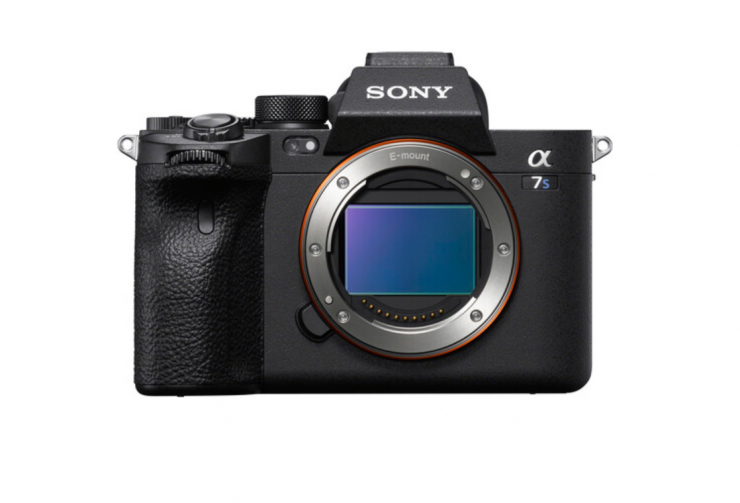
Despite offering the same sensor and a lot of similarities when it comes to frame rates and recording options, the FX3 arguably makes a lot more sense to me personally for video use than the a7S III.
If you are primarily shooting video, then I don’t see any huge reason why you wouldn’t pick this camera over an a7S III.
However, there is still a lot of reasons to pick an FX6 over an FX3. Items such as Electronic variable ND, SDI, Genlock, Timecode In/Out. and use uploadable LUTs make a huge difference in a lot of real-world shooting scenarios. Yes, the FX3 is smaller, but the FX6 is hardly a large camera.
In saying that, the FX6 doesn’t have 5 axis in-body image stabilization and some potential users may find that more appealing than the electronic variable ND.
The thing to clearly remember is that there is no right or wrong answer here. All three of these cameras are extremely capable tools that can get the job done. The nice thing for consumers is that we do have a big choice and it is becoming increasingly easier to find the right camera for your individual needs.
Initial thoughts
The FX3 is an intriguing if not slightly confusing camera. It is almost as if Sony just created a camera for the sake of creating a camera.
The FX3 clearly does step on the toes of the a7S III, but I personally think there is enough differentiation between it and the FX6. In a lot of ways, the FX3 is an a7S III in a slightly different body with a handle and an XLR module.
We tend to expect a lot with camera releases, and sometimes that involves having unrealistic expectations. The FX3, at least in my opinion, is still a solid offering that gives you all of the benefits of the a7S III in a slightly more video-centric package with better included audio options, S-Cinetone, and proper cooling.
People are still likely to still complain that there’s no internal RAW recording, there are no anamorphic modes, it can’t record in 6K, and that it doesn’t have electronic variable ND. Complaining about what a camera does or doesn’t have is an exercise in futility. You have to applaud Sony for being able to squeeze everything they have into such a tiny camera. If you don’t like what Sony has done there is nothing wrong with that, there are plenty of other camera options out there.
I’ll say it again just in case you missed it. Anybody complaining that they were expecting FX3 to be an FX6 in a smaller body with the same features for less money is living in a dream world.
I personally think that the FX3 is bound to be a very popular camera and it is going to meet a lot of user’s requirements, however, the consumer will ultimately decide its fate.
What is your reaction to this announcement? Is the FX3 the camera you have been waiting for? Did you buy an a7S III and are now regretting your decision? Let us know in the comments section below.
Like what we do and want to support Newsshooter? Consider becoming a Patreon supporter and help us to continue being the best source of news and reviews for professional tools for the independent filmmaker.

